Devon Trevarrow Flaherty's Blog, page 16
January 16, 2024
Advent Book Review: On This Holy Night
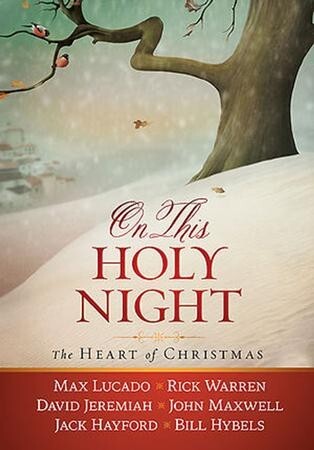
This book is fine. It’s one of those promotional-feeling things, like that you might be given to you at church during a sermon series or as a holiday gift, or at something where you might be encouraged to “give it away,” some pastor envisioning that someone might off-handedly read it and find some truth where they least expected it. My guess is that the chapters—which are essays or sermonettes—are pulled from other books or writing elsewhere, meant to help us remember the “reason for the season” come Christmastime. As much as I usually don’t like books that fall into this rather long-winded category, this one was fine. In fact, one of the chapters even really got me thinking and moving into the new year with new, positive (Believer) motivation and thoughts. But it was probably just the words I needed right at that moment, more than the book. Maybe.
On This Holy Night is a tiny, little compilation of six writings by six well-known contemporary, Christian authors (pubbed 2013) meant as Advent reading (though in six chapters, you can break this down however you want but it won’t fit “nicely.” Maybe every other day during the Twelve Days of Christmas?). The book itself is small, to hold the small chapters, and has a hard, shiny cover and those extra-thick, shiny pages (all of which I am not a fan of, generally). But I have been on the hunt for a few years for good reading related to Jesus and Christmas, and so this was the one I tried this year. I am still much happier with last year’s Honest Advent by Scott Erickson. However, if you want something less demanding than one short reading for every day of the month, then On This Holy Night isn’t exactly a bad idea. You could certainly do worse.
I don’t really have a ton to say. I had to look up at least one of the writers because I know he’s become a bit of a controversial character, but it was nothing like what I feared. It was some doctrinal issue related to a denomination. Perhaps one of the other authors has fallen out of favor. It’s hard to keep up with these Evangelical personalities, these days, if that’s even what all of them are. Here’s the list of authors, and then you can determine if you have an issue with any of them, yourself: Max Lucado (who I have referred to elsewhere), Rick Warren, David Jeremiah, John Maxwell, Jack Hayford, and Bill Hybels. Whetever their personal or influencer lives, I didn’t find anything to be worried about in this little book, except maybe a few moments of cheesiness or an almost-worrying, outdated phrase. Almost. And all in the first section.
So, if you are looking for something new to read next Advent (or whenever) to wake up the Christmas story for you a little bit but not demand too much of you (it’s a busy season, after all!) this would be a fine, little book to grab. It’s calm and provocative in the lightest-handed way. It’s not going to blow your socks of, philosophically, but as Lucado is fond of claiming, it’s for the “average reader,” not Duke Divinity students. I found Jack Hayford’s “I Wish You a ‘Mary’ Christmas” to be the most thought-provoking, inspiring my word of the year: Mary.

“…a miraculous story that transfuses new life into all who truly listen” (pviii).
“Wise men of every age, when handed a difficult situation, don’t panic about the problem, but hold steady and say, ‘God is somewhere in this stable of life. There’s something I can learn. I’ll hold steady because God is somewhere in this’” (p11, John Maxwell).
“The difference between the average and above average person lies in just three words: And Then Some” (p16, John Maxwell).
“God has always provided travel guides to earnest spiritual seekers … those who diligently seek after Christ will find Him” (p28, Bill Hybels).
“Life will add up only when you put Christ in the center of the equation” (p30, Bill Hybels).
“He was born into a real family, and He worked a real construction job. He lived in a neighborhood. He had real friends. He suffered hardship like the rest of us have, and He died a cruel death for a crime He didn’t commit …. Jesus was a refugee before His first birthday” (p34, Bill Hybels).
“When Christ takes up residency, by His Spirit, in an ordinary life, I can assure you the ordinary gives way to the extraordinary” (p38, Bill Hybels).
“The Bible is a fence full of knotholes through which we can peek but not see the whole picture” (p43, Max Lucado).
“But in our wanderings, there is one question we never need to ask. Does God care? Do we matter to God? Does He still love His children?” (p51, Max Lucado).
“If someone comes to you and says salvation is here or over there, don’t you believe it” (p65, David Jeremiah).
“You might be a little more sophisticated, but you’re in the same less you were in before you started. Why? Because there’s only One who can change your life, and His name is Jesus” (p67, David Jeremiah).
“What are you going to find this Christmas? I’ll tell you what you’re going to find: you;ll find exactly what you’re looking for” (p74, Rick Warren).
“Notice that it simply says ‘all who believe.’ All means you. You just let go” (p78, Rick Warren).
“Religion is just man’s attempt to get to God. Relationship is when you get to know Jesus Christ in a personal way and He becomes a Friend” (p89).
“Mary’s virginity represents with impossibility, humanly speaking, of life coming forth. We need to see her virginity as a picture of the hopelessness of the situation” (p99, Jack Hayford).
“It’s interesting to study the flow of human history, to discover all the things that converged to make this the ideal moment for the appearance of the world’s Redeemer” (p100, Jack Hayford).
“The message that comes to us from the Lord is a message from another world” (p105).
“…whenever God comes to work, the first thing He has to do before He can unleash it on us is say, ‘Don’t be afraid. Just take it easy. Everything’s going to be all right. We’re going to do a good, healthy thing’” (p108, Jack Hayford).
“The Lord’s not inviting you to work your way through things so He can bless them. His miracle is not going to be based on your experience, growth or development, effort, or what you can produce at your level …. It’s based on His declaration” (p110, Jack Hayford).
“When God speaks His word, He commissions a ministry of the Holy Spirit to perform it. God will hasten His word to perform it” (p114, Jack Hayford).

And just an FYI: I just found this Christmas with The Chosen: Holy Night, and it has remarkable reviews. Perhaps this would be a great special to watch next Advent, or when reading this book? Just came out like last month. I’ve been meaning to get around to watching The Chosen series, anyhow, and this is some sort of Christmas special including Anrea Botocelli.
January 9, 2024
ARC Review: The Truth About Horses

I kinda wish The Truth About Horses by Christy Cashman wasn’t titled The Truth About Horses. And I also wish the cover were different. Though it almost looks self-pubbed and the title is lackluster and maybe even cheesy, the book is pretty solid. Despite some rather specific things I will find to complain about, overall it’s a good experience with older MG/earlier YA literature. Especially if you like horses. But it’s true: you don’t have to be a horse person (I’m not) or even a teen (I’m not) to enjoy this story and the fairly deep issues that the realistic characters are dealing with, though I think teen horse-lovers are the ones who will appreciate it most. Maybe not ground-breaking, but something I could see a lot of people liking and quite a few appreciating for its subject matter.
Reese is 14 and is rooting for her family’s horse, Trusted Treasure, to win the Black Elk. But when Treasure takes a spill, it’s only the beginning of everything falling apart for Reese. A year or something later, everything has changed and while trying, alone, to put together the pieces of her life, Reese meets Wes, a man who refuses to speak (as in he’s mute) while he deals with his own trauma, and who is new to town and the owner of a horse stable. Reese inserts herself into the barn and into Wes’s life in her quest to get her horse back and find some sense of happiness and purpose… and Wes isn’t sure this is such a good idea.
I read this book as an ARC, which actually happened two months after its publication by the time everything washed out. And then I was doing Nanowrimo and then I was sick and then the holidays were a mad scramble. By now, the book has tens of reviews on Goodreads and Amazon, and people are loving it, for the most part. I am not paid to read ARCs, but I like to give a positive review as well as an honest one. I can do that with this book, even though my review is already just one of many.
Let me get something over with, like ripping off a Band-Aid; I was uncomfortable, at times, with Reese’s relationship with Wes. I don’t think Cashman meant to create sexual/romantic tension between Reese and a man who it would clearly be statutory for her to be in a relationship with, but the tension was there, especially since Cashman failed to clearly define his age. At one point, Reese says he could have been twenties and he could have been thirties, and I think this was a bad idea because then the questions start swirling in the readers’ heads. Is he 20? How old is Reese at this point? 16? I am actually dealing with this in the novel I am currently writing, and I ended up aging one character up and the other down so that the romantic overtones weren’t creepy. Again, though I don’t think Cashman meant to do it, I was occasionally creeped out and worried by the relationship as it developed, and I just wish she would have nipped that in the bud early by telling us how old this (preferably middle-aged) man was or given Reese some stated aversion to him in that way. (I mean, he was young, talented, and handsome, basically her dream man, and they went through so much together.)
I suppose it was also kind of long, but that might have been due to the printing, like the paper type and font size and all that. It came with a list of glowing recommendations from everyone from Joyce Carol Oates to Carly Simon (and Harry Connick Jr.). I also found it to be a little bit rough around the edges at times, and I don’t mean that about the writing—which was pretty clean and painted clear pictures—but about the characters, especially Reese. The book was a blend of something Hallmark-y with some very strong feelings of anger and quite a bit of cussing. And conversations about her dad sleeping around with the women around town. Not that this stuff isn’t realistic, but it felt, to me, like an odd mashup between the lighthearted, overall presentation and then the grit and mess. The same things made me wonder about Reese’s age, about the age of reader the book was intended for… on one hand it was very YA in subject matter and on the other, very MG in tone. I also had some random issues with little things, like a scene where the reader was set up to believe one thing and then it was not what had happened, or like the actions of one of the side characters being a little cryptic and odd. The first person POV is appropriate for the story.
It is Cashman’s first novel, and I think it possible she could write a lot more in the YA and MG arenas and hook some repeat readers, a la Jacqueline Woodson. This could also be the only story she has to tell, and she’ll end here (with other careers in her life). There will always be kids and teens (and adults) who love horses, and a pastoral in the modern times is a breath of fresh air that is reminiscent of both Judy Blume and books like Where the Red Fern Grows or Sign of the Beaver, at the same time.
The Truth About Horses is both what you expect and not. It has strong characters, realistic situations, growth, a whole lot about horses and a girl’s love of them, sweeping vistas, and other things to keep the pages turning. I would say the writing is adequate and there is some tweaking Cashman may learn to do as she writes more books, which I’m kinda assuming she will. If you have a teen in your life who is either a) into horses or b) going through some stuff, this is an accessible, small-town-agrarian-warm-feeling book that they can probably see themselves in. Really, all of us can see ourselves as struggling against the loss and injustice in our life, and Reese is an honest character to walk us through some of that.

As I said, this is Christy Cashman’s first novel. She also has a couple of children’s picture books. She was first an actress and a producer and has been in a bunch of movies. She lives between Ireland and Massachusetts and actually has horses as well as a lifelong love of horses. Her website is HERE, where there is a nice trailer for The Truth About Horses.

“I don’t like being a stranger in a place that’s put its giant thumbprint on me” (p46).
“I think Wes has already figured out that stringing a bunch of sounds together is way less useful than we think” (p58).
“’When a horse charges, you have two choices. You stand your ground, or you stand your ground’” (p91).
“Crying about a stupid thing you’ve done is something horse people should do on their own time” (p92).
“I sleep like a baby. Literally. I’m awake every couple of hours and I’m restless and I want to cry. I realize that making an effort to go to sleep is making sleeping even more difficult” (p101).
“Even if Lexi spent twice the time working on her personality as she spends putting on her makeup, she’d barely make it to tolerable” (p192).
“He said most people use their vision to strengthen their fear, not to overcome it” (p222).
“Since humans aren’t great at dealing with pain, fear takes over. And we want to, you know, give a face to that fear” (p227).
“’It’s so hard to lose someone who’s died, but maybe it’s just as hard to lose someone who’s standing right in front of you’” (p312).
“But that night, it’s like we started to see each other again. And it seemed like we had both changed some and we had both stayed the same some” (p333).
“…once dreams are reached, they’re meant to turn to dust, giving you a chance to dream again” (p354).

The book is new and she’s a new author and it’s not exactly spreading like wildfire, so I don’t see any movies or shows in the works. However, Cashman is a producer, so maybe she’ll make a movie or show of The Truth About Horses as her next “pet project?” I think it would actually work really well as a movie or a limited series, maybe even better than the book.
December 29, 2023
Book Review: The Christmas Pig
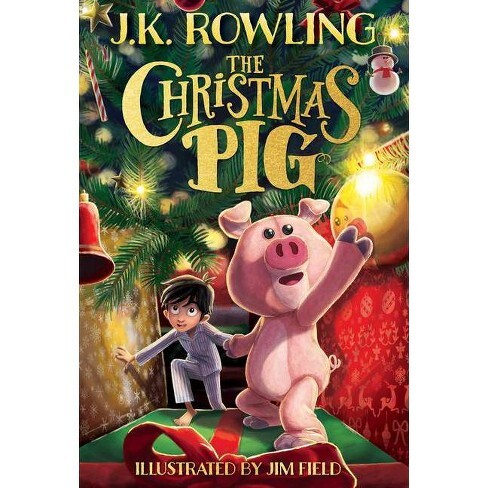
I am such a Harry Potter fan that I am almost always disappointed by J. K. Rowling’s other works, simply because they are not Hogwarts in the 90s. So let’s just take this children’s chapter book for what it is: a magical, Christmas journey into the Land of the Lost by one little boy and a stuffie that comes to life on the most magical night of the year. It’s a perfect set-up of taking what all children have imagined and running with it to create a whole world, swooping in on topics that many kids can relate to (divorce, blended families, losing a beloved toy, or more generally change and loss). I see this book as most successful being read aloud to children over the holiday season. And a kid may want to return to this one year after year. At the very least, it’s full of fanciful and wonder-ful things that will be fascinating the first time through.
Jack’s dad is gone, he moves to a new town, he gets a new step-dad and a new sister, but through it all he has DP, his worn-out but very understanding pig stuffie. DP will always be there for Jack, until he goes missing on Christmas Eve. Finding DP is nearly impossible, but combined with the magic of Christmas, Jack’s bravery and loyalty to DP will take him and the Christmas Pig on an amazing adventure into and across the Land of the Lost, where they will meet all the lost Things and contemplate their fates while making both friends and enemies. Where is DP? And can Jack—a real, live boy—steer clear of the Loser for long enough to save DP before midnight?
This book was next on my best books of Christmas picture books list. It turns out it is a chapter book with some illustrations, not a picture book, but that wasn’t going to stop me from reading it. I got it in the mail; I read it over a few days in my spare time.
I enjoyed it. I really think elementary aged to early middle school kids would really like it. But, as always, I have a few things to say. I mean, that’s kinda my job here.
I always find Rowling’s actual writing and writing style to be lackluster. I think Harry Potter is such a thing because of, first and foremost, the world Rowling built. Then add in her attention to detail, her characters and the plot (which is also touched by attention to detail) and you have a tour de force that translates well to other mediums without losing a ton (because it isn’t the writing that is drawing the attention here). I also think that with the magical boarding school she really hit a sweet spot with the fantasies of a couple generations, which is perhaps why Fantastic Beasts and her other books have not been as incredibly popular. (Well, maybe she should have actually written that series, but taking us away from the school and the teens was perhaps not what people really wanted. See my review HERE.)
Nevertheless, Rowling created yet another intriguing world with The Christmas Pig. It is geared much more for elementary-age kids up through at least early middle grades, and her writing is as lackluster as ever. (I could say straightforward. She is always clear. She never messes with real description, with word play, with language itself (except in naming things.)) But the place where Jack goes for the space of the book is creative, new, and full of those little details that made the Wizarding World what it is. But this time we head to the Land of the Lost, where lost things go. We cram the whole world into one book and bring it down in complexity for younger kids and space constraints. Still, there is a lot of world built and characters introduced in this small novel.
I also think that The Christmas Pig feels awkwardly like a fairy tale or, actually, more like a fable, yet I don’t think kids would mind that in the least. This would be a good one to read aloud at Christmastime to your little ones. Or give to a young bookworm under the Christmas tree. It doesn’t have to be a Christmas story, it just takes advantage of the holiday because it is the one night in a year when magic can happen. Most of the story has nothing to do directly with the holidays except that it takes place that time of year (after the first section or two).
The book has very short chapters. It is broken down into sections. Nice, black and white illustrations, but they were often a giveaway of what was to come and that always annoys me. Just put the illustration later. Unless they meant to foreshadow for kids? Nah. I don’t like it. And I would have liked more illustrations, actually, just in the right places.
And one last thing: this story could actually be too scary for some kids. There are some fairly bleak moments, but the real issue is when the Loser actually shows up. If you really imagine it well, he’s terrifying. Kids with overactive imaginations could get really scared of the Loser like kids who were terrified of the Wicked Witch of the West (my sister) or Gremlins (me). Then again, I think that most kids can probably handle it, especially kids these days who need to emotionally work through what’s going on in their own lives, from a pandemic to their own parents’ divorce. Or bullies. Or school shootings. Whatever. Reality isn’t always a pretty place, and fantasy should have bad guys that really suck, you know, like Voldemort.
In conclusion, I recommend this Christmas chapter book for kids and (for the third time) suggest that is a great read-aloud option for the holidays. It appeals equally across genders and life experiences, and across several ages. You’re not likely to recite it or quote it as great literature or poetry, but the story will enchant and stick with you and the kids, and they may ask for it again the next year.

“’Losing is part of living,’ whispered DP into Jack’s ear, his snout snuffling against Jack’s hair. ‘But some of us live even though we are lost. That’s what love does’” (p234).
“’You can love more than one thing!’ said Jack” (p257).
“He’d given the Things hope, which no lock can contain” (p258).

I don’t think there’s any talk of The Christmas Pig being made into a movie. Yes, we are only two years into its publication, but it also had some lackluster interest because some Rowling fans were boycotting her at the time (and even still). I am totally not going into all of this here I’m just making the point that some fans being upset at her means that The Christmas Pig isn’t getting the same reviews, attention, or media deals that it would have if this boycott had never happened).
HERE is a link to the trailer for the Audible version of the audiobook with actors.
December 28, 2023
What to Read in January


I have only been reading books specifically chosen for the new year for a few years, and so far the only real recommendation I have for you from this endeavor is Dear Ijeawele by Chimamanda Ngozi Adichie, though it is not a new year read as much as it is a feminist/mother-daughter/parenting read. The full title is Dear Ijeawele, or A Feminist Manifesto in Fifteen Suggestions and is a nonfiction novella (if that) in the form of a series of letters from the author to her friend who is raising an infant daughter “to be a feminist.” By the author of Americanah, this book zooms in on Igbo culture in Nigeria and is a random collection of advice that was never meant to be a book, some of which I appreciated and some I was not in agreement with. It’s thought-provoking and short.
I have read other self-help-y things at the start of the last few years—just in the spirit of a new year–that could make good New Years reads, including: Anxious for Nothing, Max Lucado (a Christian read with a sort of light approach to garden-variety anxiety); Notes on a Nervous Planet, Matt Haig (another advice-y, thoughtful book, but more my speed and more engaging. I actually loved this book); Don’t Feed the Monkey Mind, Jennifer Shannon (a newer, classic repackaging of psychology to help readers deal with worry and anxiety); and Why Zebras Don’t Get Ulcers, Robert M. Sapolsky (a more science-heavy approach to stress and related diseases, kinda long, pretty classic, but engaging, and interesting to me).

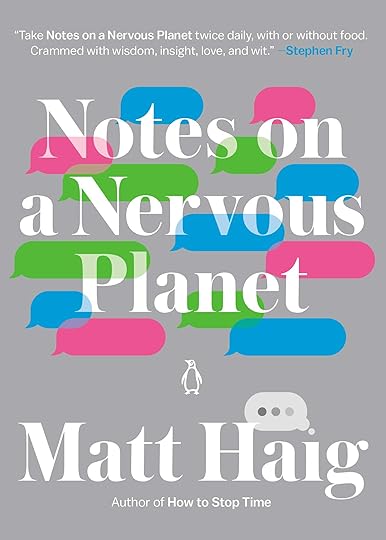

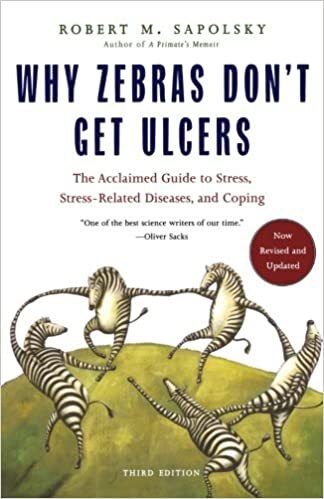

It’s a new year, and I am fond of feeling my way to a blank slate, setting some goals, rethinking my processes, etc. Here is a list of things that I am considering reading for New Years, including a couple highlighted journals and planners:
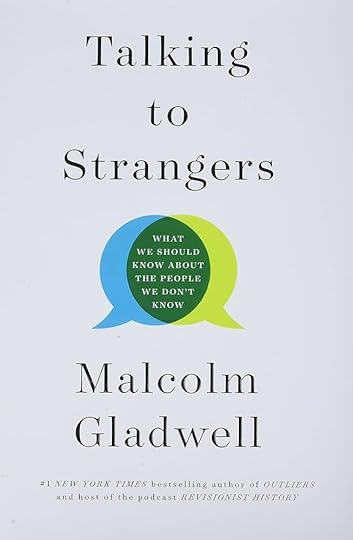 Image from Amazon.com
Image from Amazon.comTalking to Strangers by Malcolm Gladwell is the first title on my New Years TBR which I have not yet read. It is highly rated. It is popular. It is nonfiction. And it is about interacting with strangers, I believe. While these descriptors don’t often go together, I am very curious but also a little nervous it won’t hook me. Maybe I should trust the reviews; I could always use to improve my social skills. Also, I think it might be more than that, more meaningful.

Finding Your Way in a Wild, New World by Martha N. Beck is a title from my New Years book club list. Maybe I should actually start the book club as a New Years resolution? I’ve been meaning to start one most of 2023, but doing it in today’s fast-paced, high-tech, flaky-commitment world is daunting. I’ll look into that. Subtitle: Reclaim Your True Nature to Create the Life You Want.

Beyond Hashtag Activism by Mae Elise Canon is another Christian title, and another book I am quite curious about, though I think I’m not totally without some knowledge in this area, already. It’s from my social issues list, and the subtitle is Comprehensive Justice in a Complicated Age, which is on fleek (where did that phrase go in a hurry?) for today’s expectation of people doing their philanthropy in a very woke, conscientious, informed way.
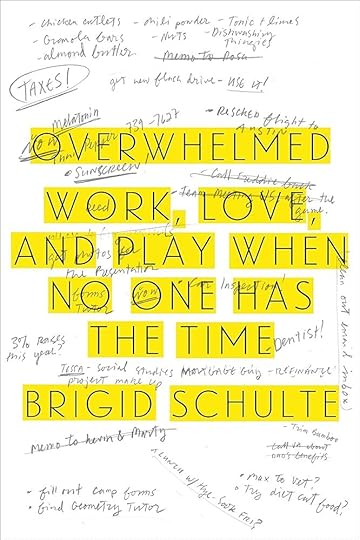 Image from Amazon.com
Image from Amazon.comOverwhelmed by Bridgid Schulte is a book that I’ve been meaning to read for a few years, at least, which means I probably should have read it years ago. It seems like a great way to start the new year, contemplating how overwhelmed I am (and we are) and maybe becoming less overwhelmed.
 Image from Decomposition.com
Image from Decomposition.comI have had a Decomposition Book before, but I have certainly never reviewed them, though I think I will do so lumped together with some other things (because we are basically talking about a lined, spiral-bound notebook made with recycled materials, so how much can there be to say?). Even so, this is my recommendation for journals for you for the beginning of 2023. I just received one as a white elephant gift, so the timing is right.
 Image from Monolike.com
Image from Monolike.comThe top (as in at the top of the list of titles in no particular order) entry in my planner TBR (yes, I have one) is Kokuyo Jibun Techo Diary. Here’s the thing, I am fully committed to bullet/dot journaling as an ADHD survival method, but I am still obsessed with books and even planners that I probably won’t use because I’ll dot journal for the rest of my life (which I probably won’t, but I should). For your sake, though, this is going to be my recommendation this year and maybe I’ll even review it, for you. Oh, the sacrifices I make (like buying new books and reading things, even if they are planners  ). Here’s the other thing: this planner does not appear to be available outside of Japan at this time. There is, however, some similar planners, like the Kokuyo Campus Diary (small, slim, with monthly format) or the Monolike Diary 6 Month Planner (of which I like the Ordinary Days theme). These are for people who want something small and practical and might also appreciate Japanese things.
). Here’s the other thing: this planner does not appear to be available outside of Japan at this time. There is, however, some similar planners, like the Kokuyo Campus Diary (small, slim, with monthly format) or the Monolike Diary 6 Month Planner (of which I like the Ordinary Days theme). These are for people who want something small and practical and might also appreciate Japanese things.
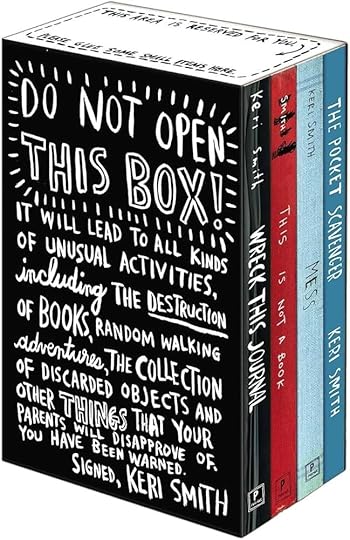 Image from Amazon.com
Image from Amazon.comThe Keri Smith Deluxe Boxed Set is the next alternative journal on my list, though it is actually four books in a box. I have been whittling away at Wreck This Journal for years, and it’s entirely possible I will finish it this year. If I was better about doing it, I would continue on with this boxed set, as I find Keri Smith’s stuff to be fun, quality, and good for me. The other titles are This Is Not a Book, Mess, and Pocket Scavenger. The point is to destroy as you create, perhaps do some out-of-the-box things, and play while also de-stressing. (The point is NOT to make Insta-worthy art, BTW.)
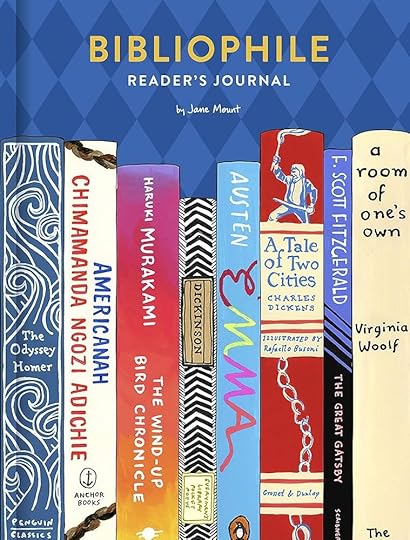 Image from Amazon.com
Image from Amazon.comAnother alternative journal that I have had my sights on since introduced to the series last Christmas is the Bibliophile Reader’s Journal by Jane Mount. I don’t know as I actually need a journal of this sort, since I keep track of my reading and impressions here at The Starving Artist and also at Goodreads, and if it has suggestions for what to read I am more than likely going to ignore them, as much as that may appeal. The truth is, I would like to have a series of books similar to it, someday, and this blog will make a good start on that. Anyhow, it’s also eye candy and intriguing to a bibliophile like me. And if you are someone who doesn’t yet keep track of reading and would like incentive to read more, then this would be a great New Years option.

I actually have a dozen or so creative journals on my shelves that are just waiting their turn, but I think it’s about time I got to What I Wore Today by Gemma Correll, which I received as a gift a year ago, but had been on my wishlist for a very long time. I enjoy fashion, a lot, and I also enjoy sketching my fits, which I frequently do when I’m listening and doodling. It’s a small, simple, journal, but right up my alley, anyhow.
I decided this part year to do a little more “work” to understand and deal with my ADHD and connected anxiety, and soon found myself looking exclusively at books for grown women with ADHD. The first of the books that I have decided to try is the ADHD Workbook for Women by Tracy Neel. It might be some sort of self-published thing and I don’t know what sort of expert Neel is, but it looks like it could be tremendously helpful. No Worries by Bella Mente is another probably-self-pubbed books, specifically an anti-anxiety journal, and is the first one I found in that category that I would like to try out.
 Image from Amazon.com
Image from Amazon.comI was already reading Free of Me by Sharon Hodde Miller when a group of my friends decided to read it together. We start in a couple weeks. It is a Christian book by the pastor of my church, but honestly I can’t think of a single better idea for this year than the get out of my own self-centered world and encourage others to do the same thing.
And now for the non-New Years recommendationS for January, which could easily span the entire year, could be the beginnings of your 2024 TBR. For that, here are a couple lists that I generated from several end-of-2023 articles bolstered by what I have heard from friends, seen and heard on podcasts all year long, and seen in bookstores. They are not comprehensive, and many of them are guesses, but it is a start from some very highly-reviews books.
The Best Books of 2023 (beginning with the NY Times’ Top Ten. I tried to include nonfiction, popular fiction and YA/middle grades):


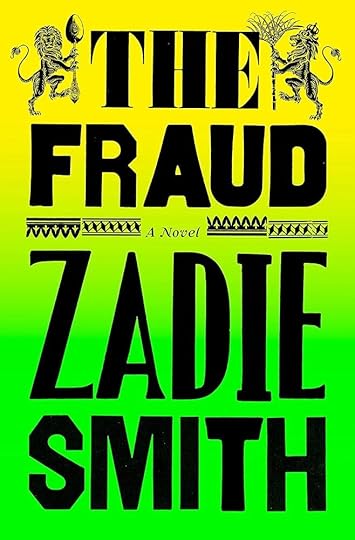

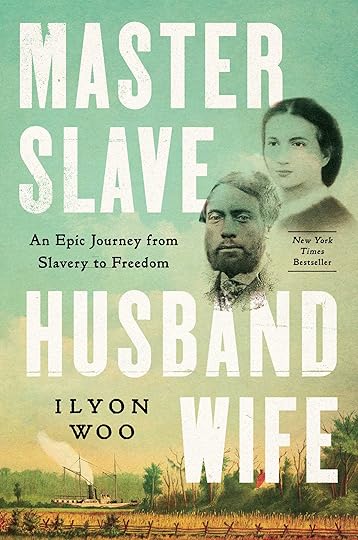
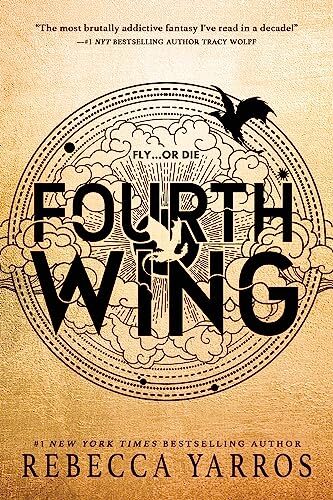

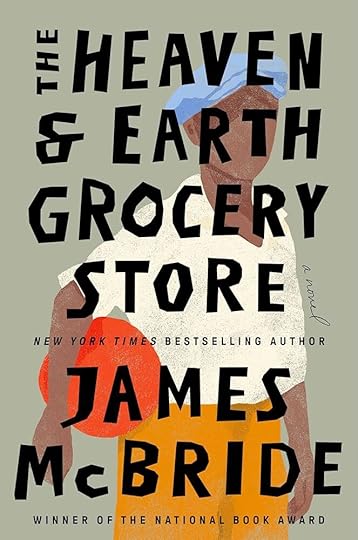
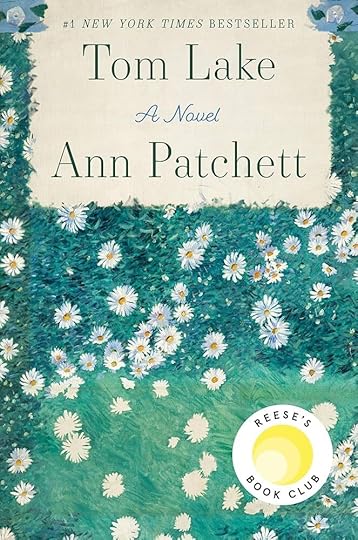


 The Bee Sting, Paul MurrayChain-Gang All-Stars, Nana Kwame Adjai-BrenyahEastbound, Maylis de KerangalThe Fraud, Zadie SmithNorth Woods, Daniel MasonThe Best Minds, Jonathan RosenBottoms Up and the Devil Laughs, Kerry HowleyFire Weather, John VaillantMaster Slave Husband Wife, Ilyon WooSome People Need Killing, Patricia EvangelistaFourth Wing and Iron Flame, Rebecca YarosNone of the This is True, Lisa JewellYellowface, R. F. KuangDivine Rivals, Rebecca RossSpare, Prince HarryBiography of X, Catherine LaceyBirnam Wood, Eleanor CattonCrook Manifesto, Colson WhiteheadDiscalculia, Camongne FelixHello Beautiful, Ann NapolitanoHeaven and Earth Grocery Store, James McBrideI Have Some Questions for You, Rebecca MakkaiLet Us Descend, Jesmyn WardTom Lake, Ann PatchettVictory City, Salman RushdieWhat You Are Looking for Is in the Library, Michiko AoyamaThe Country of the Blind, Andrew LelandMy Murder, Katie WilliamsOur Share of Night, Mariana EnriquezEmergency: Stories, Kathleen Alcott (short story collection)Day, Michael CunninghamTo Name the Bigger Lie: A Memoir in Two Stories, Sarah VirenFlee North, Scott Shane (historical nonfiction)My Work, Olga RavnOrdinary Notes, Christina Sharpe (memoir)The Rediscovery of America, Ned Blackhawk (nonfiction)Same Bed Different Dreams, Ed ParkAmerica Redux, Ariel Aberg-Riger (YA nonfiction)A Door in the Dark, Scoot Reintgen (YA)Family Style, Thein Pham (YA graphic novel)Houses with a Story, Seiji YoshidaThe Isles of the Gods, Amie Kaufman (YA)The King is Dead, Benjamin Dean (YA)Mascot, Charles Water and Traci SorellBea Wolf, Zach WeinersmithChinese Menu, Grace Lin (graphic novel)The Eyes and the Impossible, Dave Eggers (MG)Jawbreaker, Christna Wyman (MG)Mexikid, Pedro Martin (MG graphic novel)The Otherworlds, Justine Pucella Winans (MG)Simon Sort of Says, Erin Bow (MG)The Swifts, Beth Lincoln (MG)The Museum of Human History, Rebekah BergmanThe Lost Americans, Christopher BollenInfinity Gate, M. R. CareyThe Wren, The Wren, Anne EnwrightLoot, Tania JamesThe End of Drum Time, Hanna PylvainenA Day of Fallen Night, Samantha ShannonLet Us Descend, Jesmyn WardFamily Meal, Bryan WashingtonDearborn: Stories, Ghassan ZeineddineLand of Milk and Honey, C. Pam ZhangOur Share of Night, Mariana EnriquezParachute Kids, Betty C. Tang (MG graphic novel)The Vaster Wilds, Lauren GroffVampire of El Norte, Isabel CanasLies and Sorcery, Elsa Morante (new translation)Bright Young Women, Jessica KnollThe Five-Star Weekend, Elin HildebrandMortal Follies, Alexis HallThe Armor of Light, Ken FollettA House for Alice, Diana EvansThe Adventures of Amina Al-Shirafi, Shannon ChakrobortyThe Brothers Hawthorne, Jennifer Lynn Barnes (YA)Divine Rivals, Rebecca Ross (YA)Heartstopper, Vol. 5, Alice Oseman (YA graphic novel)Gather, Kenneth M. Caddow (YA)Imogen, Obviously, Becky Albertalli (YA)Catch Your Death, Ravena Guron (YA)Thieves’ Gambit, Kayvian LewisHell Bent, Leigh BardugoTranslation State, Ann LeckieA Power Unbound, Freya Marske
The Bee Sting, Paul MurrayChain-Gang All-Stars, Nana Kwame Adjai-BrenyahEastbound, Maylis de KerangalThe Fraud, Zadie SmithNorth Woods, Daniel MasonThe Best Minds, Jonathan RosenBottoms Up and the Devil Laughs, Kerry HowleyFire Weather, John VaillantMaster Slave Husband Wife, Ilyon WooSome People Need Killing, Patricia EvangelistaFourth Wing and Iron Flame, Rebecca YarosNone of the This is True, Lisa JewellYellowface, R. F. KuangDivine Rivals, Rebecca RossSpare, Prince HarryBiography of X, Catherine LaceyBirnam Wood, Eleanor CattonCrook Manifesto, Colson WhiteheadDiscalculia, Camongne FelixHello Beautiful, Ann NapolitanoHeaven and Earth Grocery Store, James McBrideI Have Some Questions for You, Rebecca MakkaiLet Us Descend, Jesmyn WardTom Lake, Ann PatchettVictory City, Salman RushdieWhat You Are Looking for Is in the Library, Michiko AoyamaThe Country of the Blind, Andrew LelandMy Murder, Katie WilliamsOur Share of Night, Mariana EnriquezEmergency: Stories, Kathleen Alcott (short story collection)Day, Michael CunninghamTo Name the Bigger Lie: A Memoir in Two Stories, Sarah VirenFlee North, Scott Shane (historical nonfiction)My Work, Olga RavnOrdinary Notes, Christina Sharpe (memoir)The Rediscovery of America, Ned Blackhawk (nonfiction)Same Bed Different Dreams, Ed ParkAmerica Redux, Ariel Aberg-Riger (YA nonfiction)A Door in the Dark, Scoot Reintgen (YA)Family Style, Thein Pham (YA graphic novel)Houses with a Story, Seiji YoshidaThe Isles of the Gods, Amie Kaufman (YA)The King is Dead, Benjamin Dean (YA)Mascot, Charles Water and Traci SorellBea Wolf, Zach WeinersmithChinese Menu, Grace Lin (graphic novel)The Eyes and the Impossible, Dave Eggers (MG)Jawbreaker, Christna Wyman (MG)Mexikid, Pedro Martin (MG graphic novel)The Otherworlds, Justine Pucella Winans (MG)Simon Sort of Says, Erin Bow (MG)The Swifts, Beth Lincoln (MG)The Museum of Human History, Rebekah BergmanThe Lost Americans, Christopher BollenInfinity Gate, M. R. CareyThe Wren, The Wren, Anne EnwrightLoot, Tania JamesThe End of Drum Time, Hanna PylvainenA Day of Fallen Night, Samantha ShannonLet Us Descend, Jesmyn WardFamily Meal, Bryan WashingtonDearborn: Stories, Ghassan ZeineddineLand of Milk and Honey, C. Pam ZhangOur Share of Night, Mariana EnriquezParachute Kids, Betty C. Tang (MG graphic novel)The Vaster Wilds, Lauren GroffVampire of El Norte, Isabel CanasLies and Sorcery, Elsa Morante (new translation)Bright Young Women, Jessica KnollThe Five-Star Weekend, Elin HildebrandMortal Follies, Alexis HallThe Armor of Light, Ken FollettA House for Alice, Diana EvansThe Adventures of Amina Al-Shirafi, Shannon ChakrobortyThe Brothers Hawthorne, Jennifer Lynn Barnes (YA)Divine Rivals, Rebecca Ross (YA)Heartstopper, Vol. 5, Alice Oseman (YA graphic novel)Gather, Kenneth M. Caddow (YA)Imogen, Obviously, Becky Albertalli (YA)Catch Your Death, Ravena Guron (YA)Thieves’ Gambit, Kayvian LewisHell Bent, Leigh BardugoTranslation State, Ann LeckieA Power Unbound, Freya MarskeAnd here is a list of 2023’s award winners:



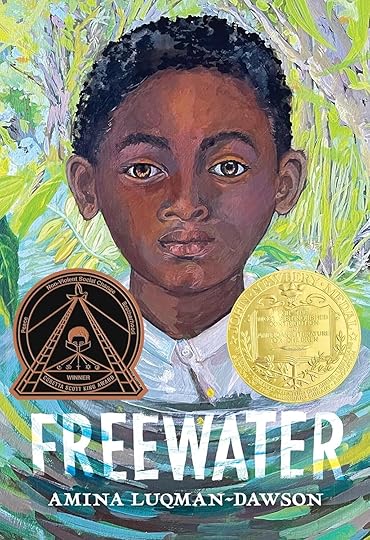

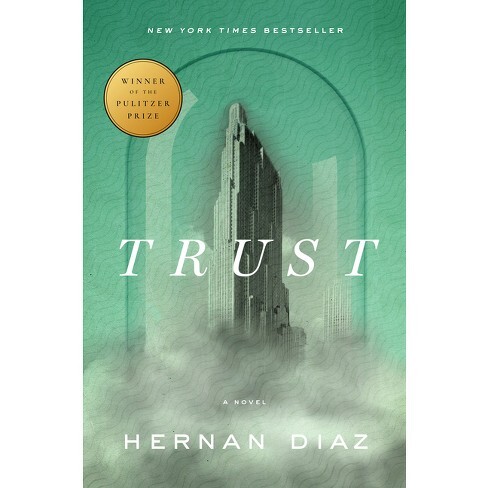

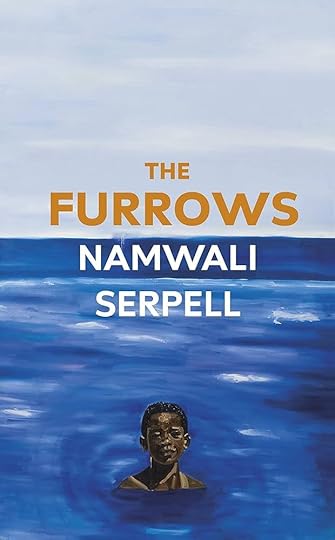

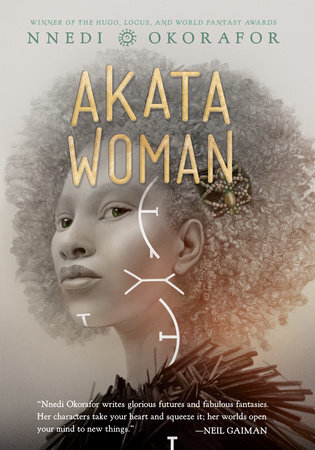
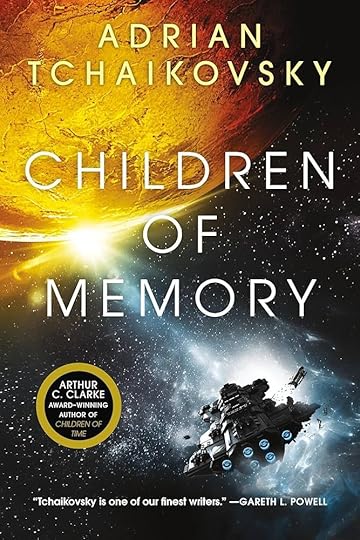
 Prophet Song, Paul Lynch (won the Mann Booker)Demon Copperhead, Barbara Kingsolver (won the Pulitzer)Trust, Hernan Diaz (won the Pulitzer)A Shining, John Fosse (won the Nobel Prize)Freewater, Amina Luqman-Dawson (won the Newbery)Hot Dog, Soug Salati (won the Caldecott)Bliss Montage, Ling Ma (won Book Critics Circle)The Furrows, Namwali Serpell (won Book Critics Circle)Nettle & Bone, T. Kingfisher (won Hugo)Akata Woman, Nnedi Okorafor (won Hugo YA)Children of Time series, Adrian Tchaikovsky (won Hugo series)Babel, R. F. Kuang (won Nebula)
Prophet Song, Paul Lynch (won the Mann Booker)Demon Copperhead, Barbara Kingsolver (won the Pulitzer)Trust, Hernan Diaz (won the Pulitzer)A Shining, John Fosse (won the Nobel Prize)Freewater, Amina Luqman-Dawson (won the Newbery)Hot Dog, Soug Salati (won the Caldecott)Bliss Montage, Ling Ma (won Book Critics Circle)The Furrows, Namwali Serpell (won Book Critics Circle)Nettle & Bone, T. Kingfisher (won Hugo)Akata Woman, Nnedi Okorafor (won Hugo YA)Children of Time series, Adrian Tchaikovsky (won Hugo series)Babel, R. F. Kuang (won Nebula)

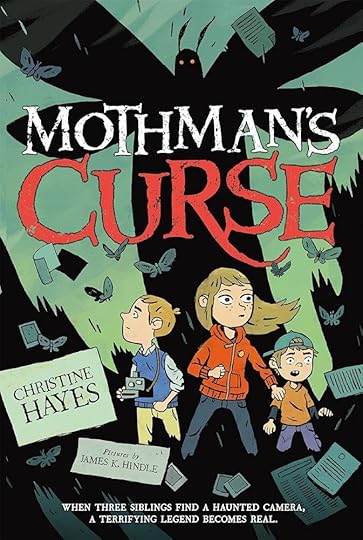
I was too busy with making Christmas magic in December to read as much as usual, but I have a few reads I will recommend. First is Mothman’s Curse by Christine Hayes. I read this book because the trilogy I am editing right now has a moth-man figure. Even though he is not the Mothman, I thought I would familiarize myself with the traditions surrounding him. This middle grades book is note widely circulated, but it was a fun, little read and I would definitely recommend it for middle grades readers who like mysteries or spooky stuff.
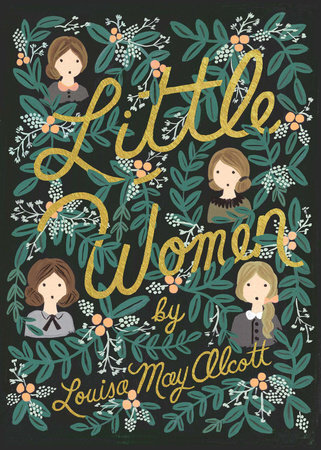
I also re-read Little Women by Louisa May Alcott, a book that had never been reviewed for The Starving Artist, but will be now. While I imagine some people will think it old fashioned or too religious, it’s a classic and I quite like the traditional ideas about idle hands and all that. It’s a sweet and large book which should be followed up with the 1994 and 2019 movie adaptations.

And for Christmas, I read The Christmas Pig by J. K. Rowing. This is another book that would be better appreciated by someone in the right age category, which for this one is elementary school and into the younger MGs. Reading it aloud to your little ones during the Christmas season would be ideal. I’ll get into it more when I write the review, but while Rowling’s writing is ever-straightforward to a fault, she has created another fascinating and creative and complete and magical world for this story, the Land of the Lost. And the tale of a little boy looking for his beloved stuffie amidst a backdrop of a broken and then blended family is both real and modern and instructive yet soothing.
And for your reading enjoyment, here is the list of my recommendations from everything I read this year, starting with my top six, followed by three pretty emphatic recommends and then all the rest of my recommend-without-reservations:

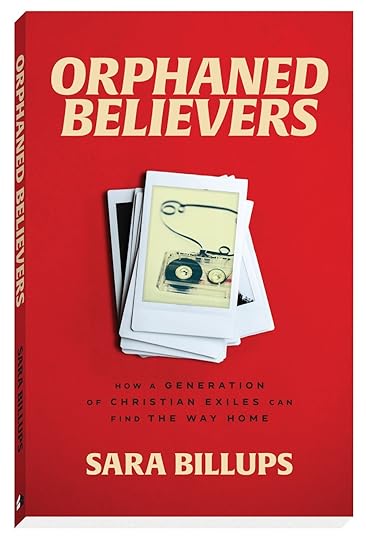
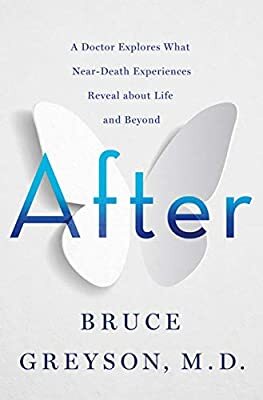
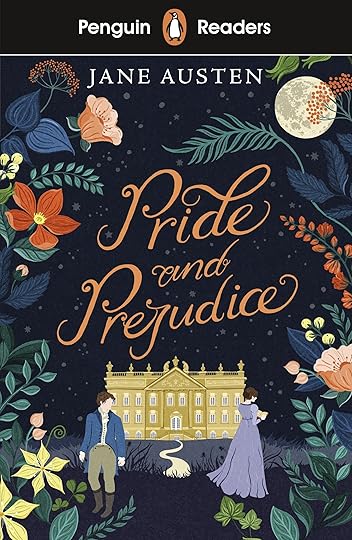
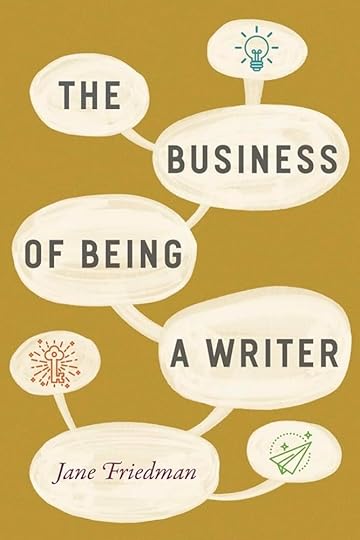
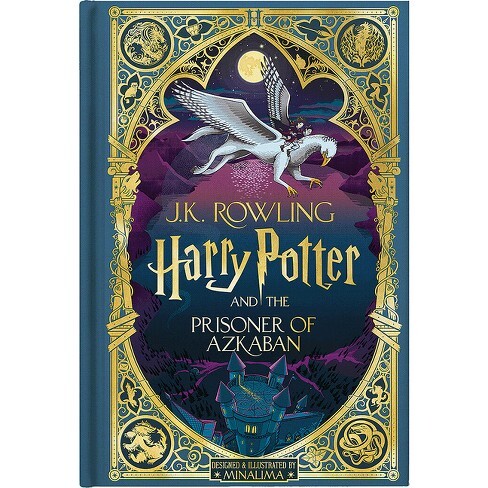
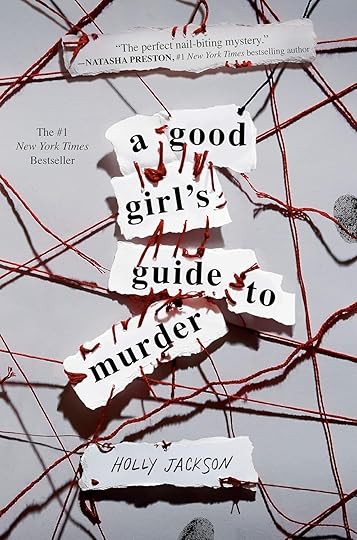
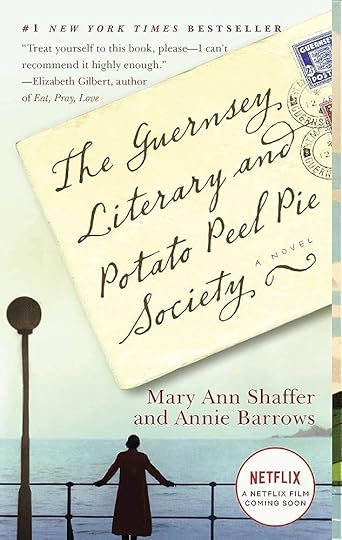
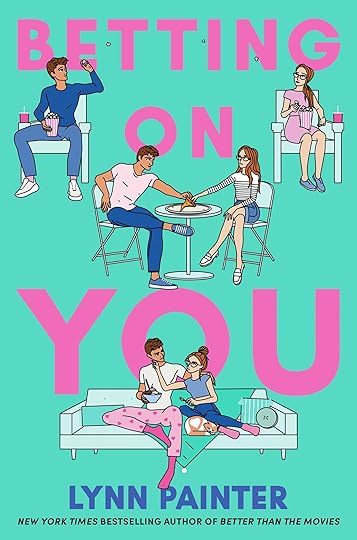 Crooked Kingdom
, Leigh Bardugo (Six of Crows #2)
Orphaned Believers
, Sarah Billups (Christian nonfiction)
After
, Bruce Grayson, M. D. (nonfiction)Pride and Prejudice, Jane AustenHarry Potter #1-3, Minalima versions, J. K. RowlingThe Business of Being a Writer, Jane Friedman (nonfiction)
A Good Girl’s Guide to Murder
, Holly Jackson (YA)
The Guernsey Literary and Potato Peel Pie Society
, Mary Anne Shaffer and Annie Barrows
Betting on You
, Lynn PainterThe Raven Cycle, Maggie Steifvater (YA)
Outlining Your Novel
(with workbook), K. M. Weiland (nonfiction)
The Loneliest Girl in the Universe
, Lauren James (YA)
Eligible
, Curtis Sittenfeld
We Are Okay
, Nina LaCour (YA)
The Good Slope
, Elizabeth Rau (nonfiction)Shadow and Bone trilogy, Leigh Bardugo
To All the Boys I’ve Loved Before
, Jenny Han (YA)
I Speak Boy
, Jessica Brody (middle grades)
A Monster Calls
, Patrick Ness
Never Let Me Go
, Kazuo Ishiguro
The Graveyard Book
, Neil Gaiman
Strange Case of Dr. Jekyll and Mr. Hyde
, Robert Louis Stevenson
The Picture of Dorian Gray
, Oscar WildeThe Truth About Horses, Christy Cashman
Crooked Kingdom
, Leigh Bardugo (Six of Crows #2)
Orphaned Believers
, Sarah Billups (Christian nonfiction)
After
, Bruce Grayson, M. D. (nonfiction)Pride and Prejudice, Jane AustenHarry Potter #1-3, Minalima versions, J. K. RowlingThe Business of Being a Writer, Jane Friedman (nonfiction)
A Good Girl’s Guide to Murder
, Holly Jackson (YA)
The Guernsey Literary and Potato Peel Pie Society
, Mary Anne Shaffer and Annie Barrows
Betting on You
, Lynn PainterThe Raven Cycle, Maggie Steifvater (YA)
Outlining Your Novel
(with workbook), K. M. Weiland (nonfiction)
The Loneliest Girl in the Universe
, Lauren James (YA)
Eligible
, Curtis Sittenfeld
We Are Okay
, Nina LaCour (YA)
The Good Slope
, Elizabeth Rau (nonfiction)Shadow and Bone trilogy, Leigh Bardugo
To All the Boys I’ve Loved Before
, Jenny Han (YA)
I Speak Boy
, Jessica Brody (middle grades)
A Monster Calls
, Patrick Ness
Never Let Me Go
, Kazuo Ishiguro
The Graveyard Book
, Neil Gaiman
Strange Case of Dr. Jekyll and Mr. Hyde
, Robert Louis Stevenson
The Picture of Dorian Gray
, Oscar WildeThe Truth About Horses, Christy Cashman
December 22, 2023
Book Review: The Picture of Dorian Gray

I had super-high expectations when it came to reading The Portrait of Dorian Gray by Oscar Wilde. I was loving the creepy, Victorian/Gothic vibes as well as the idea that a painting was aging while the model remained ageless. (Hope I didn’t spoil anything, but at this point I feel like everyone knows at least this much, though the original readers would have had more suspense about what was going on). While I did enjoy reading it and would recommend it, it was structured in a way that gave a bumpy ride, plotwise. Sometimes it was a bit slow (though at the beginning I was enjoying Wilde’s wordsmithing and the luxurious, Gatsby-esque aura he was creating), and then sometimes it just leaped over things. (There was an entire section detailing Dorian’s hobbies through the years that just about killed me. I skipped over whole paragraphs.) While the plot is the point of the story, it is an extremely simple one, leaving me wanting for more layers. But it’s a classic, forward-thinking for its time, and a short, almost-creepy read.
Dorian Gray open up with two men who are not Dorian, though they get to talking about Dorian. One of the men is an artist and he has become obsessed with his newest model and has just completed his life’s masterpiece: a portrait of Dorian Gray. The other man has yet to meet Dorian, but soon does, also becoming obsessed but throwing his obsession into influencing the young, innocent Dorian into using his beauty to become a rake and a rascal and introduces him to many controversial ideas about the world, society, and humanity. When Dorian sees the portrait, he makes an off-handed wish that the portrait would age and that he never would. When the portrait is gifted to Dorian and he commits his first heinous sin, he discovers that wishes do sometimes come true, which means that he is free to live however he wants without consequence. And yet, the portrait haunts him…
I read this book because it was next on my Halloween reads list. It took me forever to review it because I finished right before I threw myself into Nanowrimo, which was followed up by a house full of flu (including me).
Okay, sigh. The whole story here hinges on the idea that sin makes a person ugly while innocence keeps them young and beautiful, essentially. The second part of that equation is less adamant than the first part. Well, quite frankly, while I do think that “fast living” and poor choices can lead to premature aging, illness and disease, etc., traditional ugliness in a particular person is a much more complicated matter than that. We all know those people who smoked like a chimney their whole lives and functioned completely normally until they died at like age 100. It’s not exactly the norm, but awful people (by which I am referring not to smokers, but people who behave terribly against others) can look dazzlingly beautiful, and some saints age quickly and aren’t exactly beauty queens. You might suggest that this is meant to be a metaphor in Dorian, that we are meant to read it as allegory, but this was an actual idea of the times which I have encountered in many Victorian novels—that you can tell what a person is like by their face and body. I call BS. But for Dorian Gray, a modern reader can read it like it is a fantastical element in order to make a point, especially since the novella is already magical realism. So do that, I guess.
So, apparently there were like 500 words that were cut from the original novella (without notifying Wilde) in order to make it more palatable to the ladies of the day. And apparently some of those words were references to homosexual romance (veiled, of course, as so much was in that era). While I wish Wilde had been left alone to tell his own story in the way that he saw fit, I am also not keen on making this an LGBTQ+ story simply because there is a lack of platonic relationships between same-sex peeps in today’s literature, and I found the themes of non-erotic obsession to be interesting (perhaps more interesting) than if they were sexual in nature. Then again, hearing a voice from the later 1800s presenting the tension and reality of either being gay or having homosexual desires would be interesting, too. And honest to Wilde’s intentions. For that, you can supposedly get a copy of the re-edited version with the text put back into it; you’ll find it by looking for the “original 1980 version” or “uncensored version.” I did not know this existed before I got my copy.
Also, I am not happy about the POV. True to the style of the times, it is omniscient third, and we spend most of our time zoomed in on Dorian and the rascally guy. The rascally guy, Wotton, was really annoying to me, and he is also prone to speeches. I don’t think we’re supposed to take everything he says as truth—quite the contrary—though Dorian falls for it and we’re left with nothing really to counter his ideas when they go especially off the rails. It made Wotton feel like the mouthpiece for Wilde, and maybe he is, but I definitely wanted to get cozier with some of the more peripheral characters and not hear so much from the lips of Wotton. It’s also the kind of story that could use a more intimate POV, which could be someone besides Dorian, like even a maid or a combination of his lovers or something. Yeah, I know, they didn’t do that kind of thing back in the day.
Blogger’s note: Wotton goes by both Harry and Henry. So confusing to me. And another note: this is a very masculine book; beware sexist off-hands. And he’s really hard on the lower classes.
Other than that, if you enjoy Gothic or Victorian literature, this is a little novella (originally commissioned for a magazine) that you will probably enjoy, especially if you like a) lush descriptions that really put you in a place and mood and b) The Great Gatsby and books like it. The writing style is a few decades older than F. Scott Fitzgerald, but it felt like a forerunner and also like the story and setting were giving off similar vibes. (Second time I used “vibes” in one review. Minus five points for me.) It’s not really creepy enough to make it a real Halloween read, but it’s a classic and a quick read which explores various ideas about beauty, morality, guilt, etc. and a peep into the elite/artist life of 1890s London and Paris.

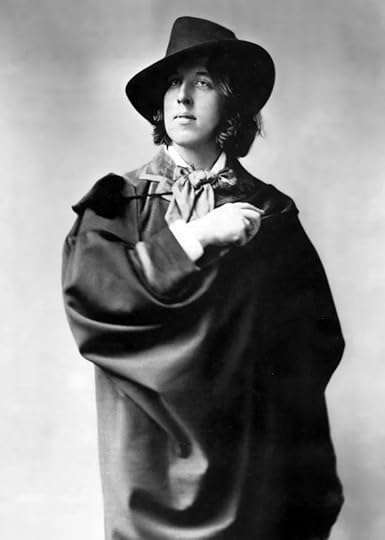 Image from the New York Review of Books
Image from the New York Review of BooksOscar Wilde is a household name (at least if you are literary or a student), yet he produced his famous works in the last years of his life, and they are not many: The Picture of Dorian Gray, The Importance of Being Ernest, and perhaps An Ideal Husband. Besides Dorian Gray, his real claim to fame was a “new” type of comedy that he presented in these later plays, beginning with Lady Windermere’s Fan. Wilde was a society artist of import for most of his life, however, and lived among the elite and the artists, doing his Irish thing in London and basically being an aesthetic and living decadently, an editor and writing fairy tales, often counter-moral to the norms of the day. Though he was married with two children, near the end of his life he was tried and jailed for “sodomy” by a “friend”’s father. After serving his sentence, he spent the remainder of his days in Paris, bankrupt, trying to rise again as a writer, but died soon after of meningitis.

“…for there is only one thing in the world worse than being talked about, and that is not being talked about” (p6).
“But beauty, real beauty, ends where an intellectual expression begins” (p7).
“There is a fatality about all physical and intellectual distinction, the sort of fatality that seems to dog through history the faltering steps of kings” (p7).
“Your rank and wealth, Harry; my brains, such as they are—my art, whatever it may be worth; Dotian Gray’s good looks—we shall all suffer for what the gods have given us, suffer terribly” (p7).
“The commonest thing is delightful if one only hides it” (p8).
“…every portrait that is painted with feeling is a portrait of the artist, not of the sitter. The sitter is merely the accident, to occasion. It is not he who is revealed by the painter; it is rather the painter who, on the coloured canvas, reveals himself” (p9).
“’Laughter is not at all a bad beginning for a friendship, and it is far the best ending for one,’ said the young lord, plucking another daisy” (p12).
“But I can’t help detesting my relations. I suppose it comes from the fact that none of us can stand other people having the same faults as ourselves” (p12).
“We live in an age when men treat art as if it were meant to be a form of autobiography. We have lost the abstract sense of beauty” (p15).
“The thoroughly well-informed man—that is the modern ideal. And the mind of the thoroughly well-informed man is a dreadful thing. It is like a brac-a-brac shop, all monsters and dust, with everything priced above its proper value” (p15).
“Music had stirred him like that. Music had troubled him many times. But music was not articulate. It was not a new world, but rather another chaos, that it created in us” (p22).
“But we never get back our youth” (p25).
“The life that was to make his soul would mar his body. He would become dreadful, hideous, and uncouth” (p28).
“Man is many things, but he is not rational” (p30).
“As long as a woman can look ten years younger than her own daughter, she is perfectly satisfied” (p50).
“Faithfulness! I must analyze it some day. The passion for property is in it. There are many things we would throw away if we were not afraid that others might pick them up” (p52).
“He says things that annoy me. He gives me good advice” (p58).
“A great poet, a really great poet, is the most un-poetical of all creatures. But inferior poets are absolutely fascinating” (p58).
“As it was, we always misunderstood ourselves and rarely understood others” (p60).
“Women defend themselves by attacking, just as they attack by sudden and strange surrenders” (p65).
“Children begin by loving their parents; as they grow older they judge them; sometimes they forgive them” (p68).
“To be in love is to surpass one’s self” (p69).
“When poverty creeps in at the door, love flies in through the window” (p69).
“Dorian is far too wise not to do foolish things now and again, my dear Basil” (p74).
“But I didn’t say he was married. I said he was engaged to be married. There is a great difference” (p74).
“And to be highly organized is, I should fancy, the object of man’s existence” (p75).
“The basis of optimism is sheer terror” (p76).
“’Women are wonderfully practical,’ murmured Lord Henry, ‘much more practical than we are’” (p78).
“When we are happy, we are always good, but where we are good, we are not always happy” (p79).
“Love is a more wonderful thing than art” (p85).
“…who were extremely old-fashioned people and did not realize that we live in an age when unnecessary things are our only necessities” (p94).
“There is a luxury in self-reproach. When we blame ourselves, we feel that no one else has a right to blame us. It is the confession, not the priest, that gives us absolution” (p97).
“Good resolutions are useless attempts to interfere with scientific laws. Their origin is pure vanity. Their result is absolutely nil” (p101).
“It often happens that the real tragedies of life occur in such an inartistic manner that they hurt us by their crude violence, their absolute incoherence, their absurd want of meaning, their entire lack of style” (p101).
“Conscience makes egoists of us all” (p103).
“I didn’t say I liked it, Harry. I said it fascinated me. There is a great difference” (p126).
“…perhaps in nearly every joy, as certainly in every pleasure, cruelty has its place…” (p127).
“…wondering sometimes which were the more horrible, the signs of sin or the signs of age” (p128).
“…he would think of the ruin he had brought upon his soul with a pity that was all the more poignant because it was purely selfish” (p128).
“…the remembrance even of joy having its bitterness and he memories of pleasure their pain” (p132).
“…the conception of the absolute dependence of the spirit on certain physical conditions, morbid or healthy, normal or diseased” (p133).
“…that pride of individualism that is half the fascination of sin” (p140).
“[Civilized society] feels instinctively that manners are of more importance than morals, and, in its opinion, the highest respectability is of much less value than the possession of a good chef” (p141).
“Dorian Gray had been poisoned by a book” (p145).
“Sin is a thing that writes itself across a man’s face. It cannot be concealed” (p148).
“My dear fellow, you forget that we are in the native land of the hypocrite” (p150).
“Each of us has heaven and hell in him, Basil” (p156).
“…the way people go about nowadays saying things against one behind one’s back that are absolutely and entirely true” (p177).
“Women try their luck; men risk theirs” (p178).
“’Women love us for our defects. If we have enough of them, they will forgive us everything, even our intellects’ …. / ‘Of course it is true, Lord Henry. If we women did not love you for your defects, where would you all be?’” (p178).
“’To be popular, one must be a mediocrity.’ / ‘Not with women,’ said the duchess, shaking her head: ‘and women rule the world. I assure you we can’t bear mediocrities” (p195).
“Actual life was chaos, but there was something terribly logical in the imagination. It was the imagination that set remorse to dog the feet of sin. It was the imagination that made each crime beat its misshapen brood. In the common world of fact the wicked were not punished, nor the good rewarded” (p198).
“Had it been merely vanity that had made him do his one good deed? Or the desire for a new sensation, as Lord Henry had hinted, with his mocking laugh? Or that passion to act a part that sometimes makes us do things finer than we are ourselves?” (p219).

There have been many adaptations of the book to movies, TV shows, and plays and musicals. The character of Dorian Gray has also been taken on by countless writers for books, movies, TV shows, etc., enough that he is usually considered one of the classic characters of the horror genre (with Frankenstein’s monster, Dracula, etc.). Here are a few notable adaptations:
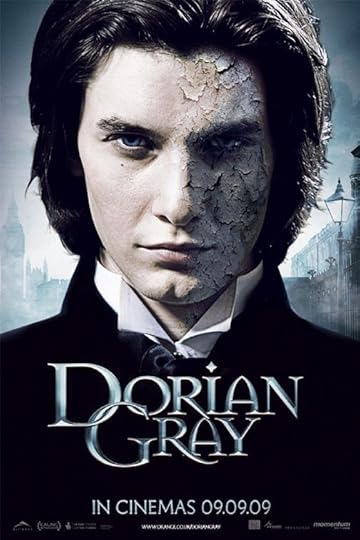 Image from IMDB.com
Image from IMDB.comSome of the classic adaptations of the book to movie have been popular, including The Picture of Dorian Gray (1915), The Picture of Dorian Gray (1945), and The Picture of Dorian Gray (1973 TV movie). A more recent adaptation of the book is Dorian Gray (2009), and I would like to check that out one of these days. I should have watched it in October. There is even a modernized version involving social media, The Picture of Dorian Gray (2021).
 Image from IMDB.com
Image from IMDB.comAs for adaptations that go further afield and just grab the character to include him in another venue, there is The League of Extraordinary Gentlemen (2003; a movie I have been meaning to see for some time due to the use of several Victorian horror characters), and Penny Dreadful (TV series, 2014-2016).
Phantom of the Paradise (1974) is supposedly a mash-up of Phantom of the Opera, The Picture of Dorian Gray, and even a little Frankenstein in a rock musical.
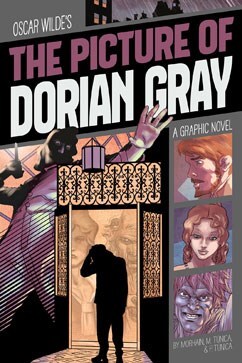 Image from Amazon.com
Image from Amazon.comThe Picture of Dorian Gray: A Graphic Novel is a highly rated version by Jorge C. Morhain and Martin Tunica.
December 18, 2023
What to Read in December
***About 20 minutes shy of posting this, I had to close up shop and head home. In that time after, I got sick. I have been out for over a week. Let’s pretend like I posted this before then.***
Ya’ll. I know you understand how busy the holiday season can be. Also, I spent the last week of November hanging on for dear life as I finished up my Nanowrimo word count. The last day, I wrote over 6,000 words (which is a count I don’t know if I’ve ever hit in a day. I know I’ve gotten to 4,000 and possibly 5,000). Then it was like, hey, look at my house and my life and my schedule; those are all things that need to be addressed, as well as, like, all the holiday things. The point is, I am posting the What to Read in December on December 8th, and that is not cool of me. But it’s what happened.
But perhaps you were never gonna get around to your December reading until holiday break? Then this list might be helpful. I mean, obviously you don’t need to start over with a new TBR on the first day of every month. But there are a lot of holiday recommends, here, as well as things that have just popped onto my radar since the last What to Read. Don’t do what I do, and take a chill pill, picking and choosing what might increase your holiday joy–or rumination–from the ideas below.

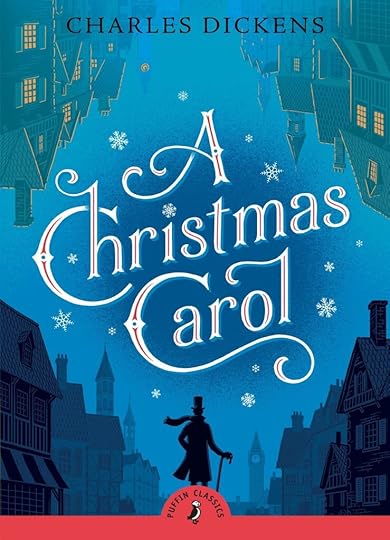
A Christmas Carol by Charles Dickens is still the only strong, Christmas novel recommendation that I have; it’s the only strong, Christmas novel recommendation I have had for years, even though I’ve been reading Christmas/holiday books every Christmas/holiday season. It’s short. It’s classic. It’s part ghost story and part witnessing the making of a holiday. And I enjoy a re-read, even though so much of it has permeated our culture.
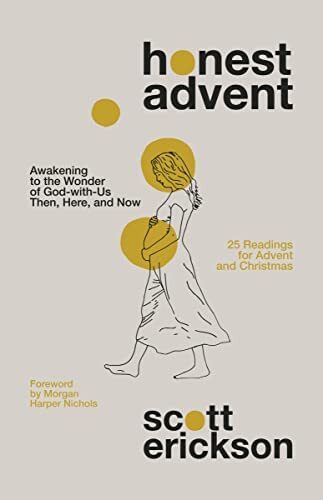
Honest Advent by Scott Erickson is my favorite advent book, which if you don’t know, means that it is a daily contemplation book meant for Christians to welcome the season and look forward to the big to-do on Christmas Day as a meaningful celebration of the birth of Christ. I have also read several of these, and only discovered this one last year. It is by far my favorite. The readings begin on December 1, but you could always get it now and start on it (again) next year; it can be a part of an annual tradition, easy.
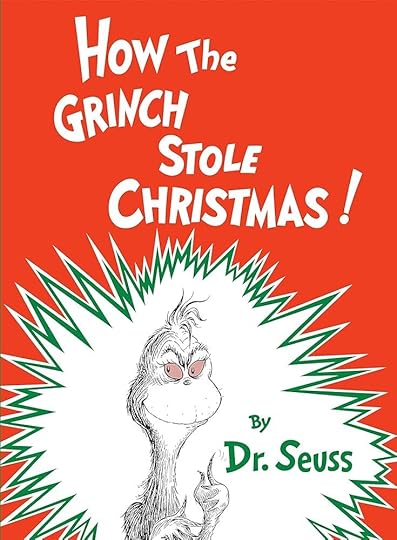 Image from Amazon.com
Image from Amazon.comAs for children’s literature this time of year (which I keep on the coffee table for anyone to pick up and have a moment), my favorite is still Dr. Seuss’s How the Grinch Stole Christmas, with second place going to The Polar Express by Chris Van Allsburgh (which has very little to do with the movie, even though it was the inspiration for it). These classics either stand the test of time or I just love them because I’m being nostalgic. I look forward to continuing to read more of these books, too, as the years go by, and I’ll let you know if I ever come across one that fills me with holiday wonder like these two do.

 Image from Penguin
Image from PenguinI have read Little Women by Louisa May Alcott, but not in so long; I have not reviewed it here. It’s not exactly a Christmas book, but I found it on lists of Christmas reads because there is at least one pivotal scene that takes place at Christmas, giving the reader a sense of Christmastime for the little March family during the Civil War in Massachusetts. There are also plenty of wintery scenes. A semi-autobiographical novel, it is very vibey, even if not everyone loves the way it ends, and is beloved by millions of readers over generations. There are also two movies based on the book that are really great, including the recent 2019 version (and 1994). I will be giving it a re-read this year.
 Image from Target.com
Image from Target.comThe Christmas Pig by J. K. Rowling is the Christmas picture book I’m going to give a look-see this year. I enjoy Rowling’s writing when she is in the magical space of writing for kids (and teens), so I am hoping to like this little book. When a little boy loses his favorite pig stuffie on Christmas Eve, the Christmas Pig shows up to help him find it, and magic and adventure ensue. Illustrated by Jim Field, it gets great reviews, too.

Even though I have found an advent book that I really like, I am still happy to keep trying others (maybe in tandem). This year I was going to read On This Holy Night: The Heart of Christmas, written by a compilation of authors featuring Max Lucado. I am behind. But I am still planning on getting a copy and reading it either in its entirety at a faster rate, or just jump in on the day I get it for that day’s reading. Though it came to me highly recommended, it is maybe out of print and not that easy to find. This is when Ebay shines (though I like to buy used books there all the time).
 Image from Amazon.com
Image from Amazon.comI also try out a new cookbook every year for Christmas, and this year I’d like to recommend we try Christmas with Kim Joy by Kim Joy of Great British Baking Show fame. I follow Kim Joy, who appears to be a wonderful human being who has struggled somewhat under the public eye but whose baking is always, always joyful and whimsical. Full of cartoonish designs and cats, no doubt, this book is more likely to give us design ideas and bakes that if we follow carefully and spend time on them will seriously impress our friends and family. Are they going to be super practical? Perhaps not. (To be fair, some of the bakes look pretty doable.) But eggnog late cupcakes dotted with pigs and polar bear marshmallows? Nothing more whimsical and sure to bring a smile to your nephews’ faces.
 Image from Amazon.com
Image from Amazon.comGetting away from the holiday (but not totally), I have been shopping around for a new Bible, specifically one that I can carry with me without it looking like I’m going to thump other coffee shop patrons on the head with it. I have landed at the ESV Single Column Journaling Bible, Artist Series. My personal preference is the Ruth Chou Simons cover, but there are several artist versions that range from floral to graphic to pop art, and they all have a vintage-book feel on the outside. Also, the ESV is one of my favorite translations and I am always going to love a Bible that leaves me room to think and doodle in the extra-wide margins.
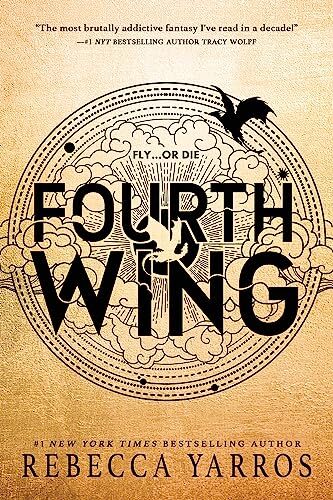 Image from Amazon.com
Image from Amazon.comI am late to the party in wanting to read (and drawing your attention to) Fourth Wing by Rebecca Yarros. It is the first book in a wildly popular and well-reviewed, fantasy-romance series. Iron Flame, number two of the Empyrean series, just dropped in November, but another book is supposed to be on its way sometime. Featuring LGBTQ+ characters and relationships, it apparently gets pretty steamy, but not so much that it couldn’t have been YA, though it sits on the edge between YA and adult and is likely to be found in the regular ol’ speculative fiction section of your bookstore. Like every bookstore near you. I’ve heard it’s not without its cheesiness, but people are going nuts over it. So we’ll see. Sounds like good fun, anyhow, and a TV series is already in the making (though happening this soon into the series seems like a kinda poor idea to me; maybe it’ll work out).

So I hardly read anything during Nanowrimo (November), actually. It wouldn’t be surprising, especially with me hosting 21 people for Thanksgiving and having my daughter’s birthday, etc., but it is surprising because it’s me. Still, I managed to read paragraphs at a time here and there, and made my way completely through one book, which I would recommend. So…

I read The Truth About Horses by Christy Cashman as an ARC. It was published in August, and the reviews have been really good. I’ll have a review to you really soon. It sits on the border between middle grades and YA, with a recommended read age of 7-9th grade or age 13-18 (which do not coincide, I know). I think many middle grades kids would not be ready for this book. But I also think there are themes and moments that are a little irrelevant to late-highschoolers. Still, it’s not one of those books that can’t be read by adults, because it totally can, which is obvious from the other reviews. It is a coming-of-age, tough-times novel about a girl who is mourning (largely through anger) the loss of so much in her life and who loves horses, misses her life as the daughter of “horse people.” If you enjoy reading about teens finding their way and you want a mild tear-jerker with a Hallmark feel, then it’s a good book and worth the read.

Here are some of the Christmas/holiday movies that I have not yet seen (or not in so long that I can’t remember them) that I will be trying to weave into my traditional watches, this season:
Office Christmas Party (2016), rowdy comedy featuring Jennifer Aniston and Jason Bateman
Just Friends (2005), rom-com with Ryan Reynolds and Amy Smart. Not totally sure how it relates to Christmas, but I’m guessing that’s the time period during which they re-meet-cute.
The Holiday (2006), another rom-com, features a huge, all-star cast (Jack Black, Cameron Diaz, Kate Winslet, Jude Law…) and a slightly more serious vibe. I believe this one also takes place over the holidays.
The Santa Clause (1994) is a family, feel-good, comedy that is a part of many families’ holiday nostalgia, but I barely remember it. Think I’ll give it a re-watch and a review. Perhaps I won’t continue on to The Santa Clause 2 and The Santa Clause 3.
Kiss Kiss Bang Bang (2005) is a more hard-boiled rom-com and I don’t know what it has to do with the holidays, but it was on at least one of the lists. Robert Downey Jr.
Olive the Other Reindeer (1999) is an animated, musical, children’s film. Actually, I have been unable to figure out where to stream it, but it looks so cute.
Full disclosure: I’ve already been watching a number of holiday rom-coms (and whatever) that have popped up in my streaming recommendations. These include Love at First Sight, Family Switch, Dash & Lily, Holidate, and Who Killed Santa?.
Other movies coming out this month (at the theater) that I am very much looking forward to:
Wonka (origin story for Roald Dahl’s Willy Wonka with Timothee Chalamet)
Wish (Disney’s newest “princess” movie about a girl who is disillusioned about the founding monarch and how dreams are a part of us we shouldn’t dismiss lightly)
Poor Things (star-studded, quirky, fantasy, feminist movie starring Emma Stone)
American Fiction (2023 dramedy about being a Black author and/or making tough choices as an author between creative (and moral) honesty and what sells)
The Color Purple (based on the classic 1982 book of the same name by Alice Walker and the 1985 film, but with more music and some updating changes, about friendship between two Black girls/women in the South in the early 1900s)

I know that I said the only strong reading recommend I have for Christmas, so far, is Charles Dickens’ A Christmas Carol, but I would also recommend (just not as strongly) Truman Capote’s A Christmas Memory, Jean Shepherd’s A Christmas Story, Helen Fielding’s Bridget Jones’ Diary, Harry Potter, Beatrix Potter’s picture book, The Tailor of Gloucester, Kate Milford’s middle grades novel, Greenglass House, and the Northumbria Community’s Celtic Daily Prayer, which has holiday-specific readings.
For me, the holiday season is always a movie marathon, while I revisit all my favorite holiday movies. My annual views are Elf, A Christmas Story, Home Alone, The Muppet Christmas Carol, It’s a Wonderful Life, Love Actually, Christmas with the Kranks, How the Grinch Stole Christmas, Rudolph the Red-Nosed Reindeer, A Charlie Brown Christmas, The Nightmare Before Christmas, National Lampoon’s Christmas Vacation, Anna and the Apocalypse, Bridget Jones’ Diary, Klaus, Arthur’s Christmas, and Spirited, in no particular order. I also recommend Last Holiday, Four Christmases, Edward Scissorhands, While You Were Sleeping, Scrooged, Rise of the Guardians, The Grinch, The Christmas Chronicles, Jingle Jangle, Last Christmas, and Violent Night (with reservations if you are freaked out by excessive violence).
December 4, 2023
ARC Review: Betting on You

In the end, I loved this book. During the book, I was hooked and couldn’t put it down. Is it a literary giant? Certainly not. It’s YA romance (or rom-com) of the typical (for now) type. Within those parameters, I thought it was perfect. So, if you like YA romance, or even just romance, then this new book is going to most likely do it for you. Maybe you’ll even find yourself a new author to read in that genre.
Betting on You by Lynn Painter novel is told in two first-person perspectives, back and forth between Bailey and Charlie, though the majority of the story is through Bailey’s eyes. It’s a pretty straight-forward meet-cute; Bailey and Charlie are like middle-schoolers when they are seated next to each other on a plane, two totally different personalities dealing with some of the same home disasters. They basically hate each other. Jump ahead to a few years later—late high school—and they end up as co-workers. They’re still on different planets, but there’s an un-acknowledged attraction, a spark. If only Charlie didn’t not believe in relationships. And if only Bailey didn’t hate Charlie. And when a bet about friends not being able to date successfully comes into play, all of the usual romance situations ensue.
I came to read this book accidentally. It wasn’t exactly an ARC given to me, but since I review ARCs, I thought this could only be a good thing. Don’t ask: I don’t even know exactly where this ARC came from, as in the name of the person who was originally given this ARC. So I can’t tattle on them, if anyone should even want me to. I waited till the book released to review, just to be extra careful. But it does mean that I can’t post quotes this time (even though I would like to) because it’s not allowed from an advanced copy, you know, in case the words change before actual publication. Here’s what really happened: someone thunked down a stack of used ARCs that they had been donated to them when I couldn’t find a local bookstore to save my life and was complaining that I needed something to read, stat. Also, they knew I read ARCs sometimes for my blog. This is the book that rose to the top once I looked them over. It seemed the most promising to me, for whatever reasons.
So yeah, I have been reading more romance (which isn’t hard, as I basically read none before) when I am on vacation or writing residencies. Without TV or streaming (and in this particular case, limiting any social media), I tend to read in the evenings to unwind. I discovered a few years ago that having a couple junk-food novels on hand for this (like genre fiction for the masses) has added to my experience. Of fun. I turned first to Madeline Miller, then Emily Henry, The Guernsey Literary and Potato Peel Pie Society, maybe there was something else in there. (Some of these are like the Doritos of literature, others more like homemade popcorn.) Then Betting on You fell in my lap, and it was exactly the kind of thing I am looking for in those moments: just fun and requiring very little of my brain or my literary criticism parts of my brain, something that will for-sure keep me interested for hours on end (which has led to me having to distance myself from a book during the day on more than one occasion. It’s one thing to be entertained of an evening, it’s another to lose work-time during the day).
I have found a problem with me reading YA romance, or even YA books with romantic elements. I’m sure not everyone feels the same about it as I do, but I am in my 40s and have teen children. When characters in a book are sixteen and getting it on in a way that’s meant to titillate the reader, I am uncomfortable. I have gotten into the habit of aging-up these characters in my head, which isn’t difficult because often YA characters act and do things much older than their age on the page, so it seems right to age them up, anyhow. I aged up the characters in this book. That said (and underscoring that this is genre is not exactly meant for me)…
I loved both of the flawed characters in this book, and thought their chemistry was great and their banter funny and cute. Also, Bailey never had to become some cooler version of herself, ala the 90s/She’s All That or whatever, and I always appreciate that in a story. I could NOT put the book down, even though it’s a bit hefty for what it is (which could be the ARC version’s paper and print?), cuz I wanted them to get together but I also knew that a black moment was going to come and there’s always that little bit of what if it doesn’t work out? somewhere in the brain. Besides the book being engaging and cute, the characters being interesting and likeable, and Charlie and Bailey having good chemistry between them, there were some smaller things that weren’t quite right. Like, I was confused about how much TV Bailey watched when she was supposed to be some book nerd who had a successful book-reviewing thing with two other gals (who never actually played out in the book. Why was it even there?). She shoulda just been way into shows and movies, or something. It didn’t quite make sense, and I was like, when does she have time to read even one book?
But other than that… I don’t have a ton to say here. If you like the genre, I really think this will be a win for most readers. And I would want to keep an eye on Lynn Painter for future reads. Or her previous books, which are:
Better Than the Movies (Better Than the Movies #1)Mr. Wrong Number (Mr. Wrong Number #1)The Do-OverThe Love Wager (Mr. Wrong Number #2)Better Than the Prom (Better Than the Movies #1.5)Accidentally AmyBetting on YouThere are also some short stories related to Better Than the Prom, in there.

Lynn Painter has published a whopping seven books (and a few short stories) in under three years. She has met with success, especially with the Better Than the Movies series, which is still being written, but who knows? She’s only just warming up, as far as I can tell. She’s from LA, and she considers her books—which are YA and adult—to be rom-coms, many reviewers calling her hilarious or at least funny. Lol and all that. There’s not that much to find out about her, yet, and I can’t blame any author for wanting to keep it that way, under the radar, these days, but she has a cute/cool anti-bio at her website. On the other hand, she has fun bonus material, keeping her online presence about the fans and what they might want. Perhaps I could learn a thing or two from her. I would like to read The Do-Over and Better Than the Movies (and probably Nothing Like the Movies, due out in 2024). These are her YA books and they get better reviews than her adult books (which aren’t bad reviews, just not as universally glowing, but maybe I should be reading those because of my middle-age status).

I don’t see any movie or show deals, but this isn’t surprising since she’s basically just started in with the publishing. It’s hard to say how high her star will arc and if it will draw enough attention to have a movie made—not that that’s all it takes, because there are so many factors involved that it’s literally impossible to predict right now until you are in the theater or at home on the couch and watching the movie in question.
November 11, 2023
Book Review: A Good Girl’s Guide to Murder
 Image from Amazon.com
Image from Amazon.comA Good Girl’s Guide to Murder by Holly Jackson is a fun, fresh read for someone of any age (above 13) who enjoys crime, murder mystery or thrillers, even if they don’t read them regularly. It is YA, and the MC (main character) is having a coming-of-age moment as she does her amateur sleuthing, but the story itself and the way it is presented is pleasantly solid as well as entertaining and modern. Like a combo of traditional and contemporary. And there aren’t too many reviewers who don’t appreciate Pip and her romantic interest (which is really in the background for this book, at least). It’s more about the disillusionment of the privileged when they encounter people’s real, messy lives and the lengths to which people will go for happiness and peace. It’s quite ugly. But that probably gives you the wrong impression. It’s fun to read.
Good-girl, high school senior Pip is applying to top-tier colleges and hanging out with her close friends and lovely family when she decides that her senior project will be an investigation into the five-year-old murder of the town sweetheart, Andie, by her boyfriend, Sal, who then killed himself. Something about the whole thing didn’t seem right to Pip, and certainly the racism that it engendered about Sal and his still-present family wasn’t right. But as Pip digs deeper and deeper, ignoring the warnings of her teacher and the concerns of her friends and family, Pip discovers that the town secrets merely begin with the murder-suicide. And when things become increasingly personal for Pip, someone clearly wants her to cease the investigation at once, or else…
I already blogged about this elsewhere, but the short of it is that I was in a small town in Tennessee (well, actually, outside of it in the middle of nowhere) and I could not find a bookstore within an hour’s radius to save my life. I ended up at a Walmart. It turns out that Walmart’s small book section specializes in popular YA, which is one of the genres I am busy reading right now because I like it and also because I am writing two YA books/series at once. This book was on my YA TBR and so I snagged it. Read it before bed in a trailer by myself in the middle of BFE, in the middle of the night. This was not a great idea.
However, clearly, I enjoyed it. In fact, what I wrote in my notes afterward was, “Loved it. For what it is, perfect.”
This story is told from the perspective of Pippa, but uses her project notes for, I dunno’, a good half of the book’s content. Interviews. Actual notes. Articles. That sort of thing. (Less as we near the end, where research winds down and the story itself ramps up.) So that makes it epistolary, at least in part. I am getting tired of eating these same words over and over, but I don’t really like epistolary novels and yet it worked this time. (It also worked for The Guernsey Literary and Potato Peel Pie Society, The Loneliest Girl in the Universe, The Perks of Being a Wallflower, and The Screwtape Letters, and those are just some of the epistolary novels I have read this year and liked. Has this become more popular? I think it’s always been a more popular story-telling device than I realized, but perhaps new writers are using innovation to make it feel better? While it’s a harder sell for me in the old style?) Pip’s case notes are central to the story, both as a prop and as a plot point, so this works here and gives voice to the many people who she talks to or investigates, while keeping many things just opaque enough to have us wondering and theorizing, little sleuths ourselves (which is an important quality of a mystery).
An important quality of a thriller is keeping one at the edge of their seat. I devoured this book because I wanted to know, and I thought the tension was admirably deft. I suppose it was pretty normal in this way, but I was kept guessing. In the end, I was right about most of it, but not all of it, and that is a book-win for someone like me who intuits plot often a little too easily. I question the tension that Jackson built around one character, partly because I’m not sure she did it on purpose or was aware of it, and she doesn’t resolve it in the end, but I talked to another reader and we had had the same experience, on the edge of our seat wondering if it was a red herring. Whatever.
There are a couple points where things suddenly felt unbelievable. Like when some stuff was lost from a computer. Well, I’ve had a laptop break on me in the past several years and (thankfully) it is really not that easy to “lose” things on a computer with all the cloud backup that happens these days, not to mention that teens most often work in online apps as opposed to on-computer software. So, while this was kinda dealt with, there was a character that bet everything on this loss of a computer meaning a loss of everything, and that’s just not the way things work these days, especially for young people. Even I know that and I’m old (not really quite yet). And there also came a time when it was obvious that Pippa would have finally gone to her parents about things, and she totally didn’t. I mean, the whole book established the great relationships she had with her family members (something I love when books do, because it is so rare) and there were reasons that she wasn’t sharing (if a bit annoying). But then the reasons are removed and… nothing. Not to mention the few times Pippa pulled one of those super-obvious-not-to-do-while-investigating-a-murder things. And she was such a smart girl. You know, like when the kids run into the barn full of sharp items and hide there. Like that. Those I kinda get, for the genre (like I can suspend my belief for the thrills), but the other two I think were just not dealt with quite right.
But I’m not complaining. It’s maybe not a perfect book, but it’s pretty darn close for what it is.
There are two more books to make this one a trilogy. I am unclear how many people go on and read it this way, but it is not necessary. There are some smaller questions left hanging at the end of this book, but pretty much all mysteries leave some of the peripheral stories open. The main things are all tied up. Or so we think. Book two deals with some of these other, mysterious plots that popped up in book one and Pip’s continued growing up and relationships. Book three takes a real turn, so I’ve heard, into the dark side, which if you think about it, is inevitable for this beginning, but does seem to shock and disappoint people who love Pip as a good girl. Apparently, it’s a real roller coaster ride of a series and it has its ragingly devoted followers. I am curious to continue the series, but that’s not going to happen now. I am syked to go down the rabbit hole with Jackson (who claims that is always where this story was going), but I also want to hang on to the sweet Pip. So we’ll see. The series is:
A Good Girl’s Guide to MurderGood Girl, Bad BloodAs Good as Dead
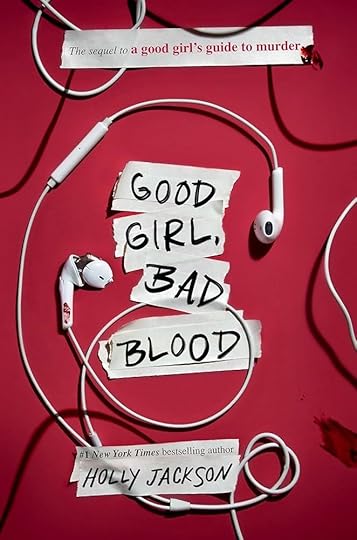

You like mysteries? Thrillers? What about YA? The mash-up of those genres is real big stuff, right now, and I think this book (and the trilogy) will stay floating at the top of the best of these, maybe forever. At least for a good long while. The innocence. The underground of what looks like respectable society. The jump scares. The knuckle-whitening moments. The pages turning well after bedtime. It was that sort of read for me and for many others. It would make a great vacation read, but maybe not when you’re alone in a trailer in the middle of nowhere in the complete dark and you’ve been uncovering someone’s secrets.

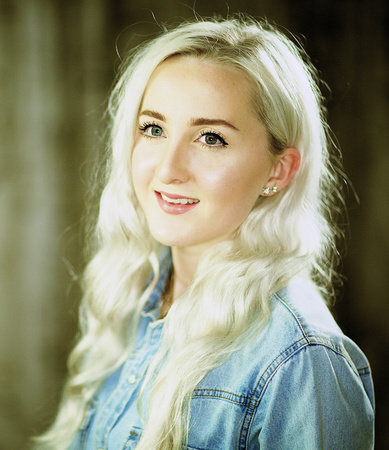 Image from Penguin Random House
Image from Penguin Random HouseHolly Jackson writes YA. A Good Girl’s Guide to Murder was her first and was hailed as a triumph right away. She is very prolific, finishing the series and a prequel (Kill Joy) in just a few years, as well as a stand-alone book, Five Survive. She has another book coming out in 2024, supposedly, The Reappearance of Rachel Price. I, as well as many others, I’m sure, am curious to see if she is the kind of author who can keep coming back and writing really great stuff. She’s a young, British lady and I don’t see that much about her on the internet, though you can follow her on Insta or Twitter (HoJay92). Penguin Random House says she likes playing video games and watching true-crime documentaries. She has always written, and studied English at uni.
NOTE: I was surprised that she wrote her first book about a town in the US, until I learned that she didn’t. This book’s setting was Little Kilton, Buckinghamshire until the publisher (with her) changed it for the US to Fairview, Connecticut. Um. I suppose this is why the town’s set up and relationship to the surrounding area seemed off to me. (Whoops. Forgot to mention that in the review.) I really wish they wouldn’t have done that. But they must have thought marketing this type of book to American, YA readers meant it fit better as an East Coast story. I can see that, but it does leave a low, sour note sounding in the background for much of the book. Like, is it a small town? Near a big city? So, a suburb? How does it feel so isolated? They must have also “translated” the book in other ways.
QUOTES

It’s not really a quote kind of book, especially as you are flying through it just waiting for the next plot point to hit.
“If a villain can be made, then he can be unmade” (p259).

 Image from BBC.com
Image from BBC.comDespite it being pretty new, the enthusiasm for this book (2019) and series (-2021) has put it on the fast track. It starts production right about now and has a cast and all the other stuff lined up. The idea is to do three seasons for the three books and we already know the first season will be the first book and will wrap up like the first book, so not on a cliffhanger. It will take place in England, which I am curious about, as the many, many fans in the US are sure to watch the first episode and go, “What?! Why did they change it?” But the change had come back when Jackson re-wrote the books for an American audience. The actors set to play Pip and Ravi are going to gain big points for the franchise, however, and I am excited to see the show’s first season in, what?, the next year or two?
November 7, 2023
What to Read in November
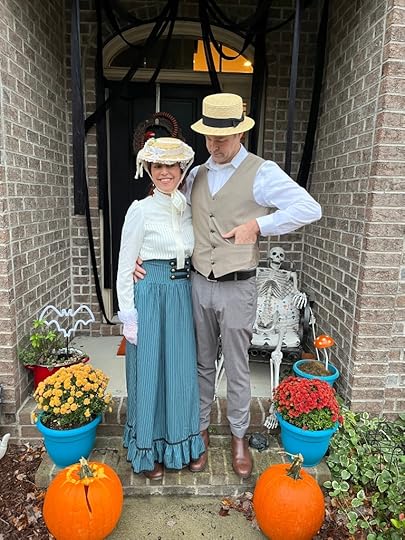
Thanksgiving is the one holiday that has an absence of canon to support it, which I have often thought is a bummer. For the past couple-few years, I have been on a search to find and read and watch what is available. It isn’t much. Nevertheless, here are my Thanksgiving season and fall recommendations. Christmas recommendations will be in next month’s list because I don’t believe in jumping the gun. Patience makes the holiday more special. Let’s linger on gratitude and fall, feasts and coziness, friends and family.

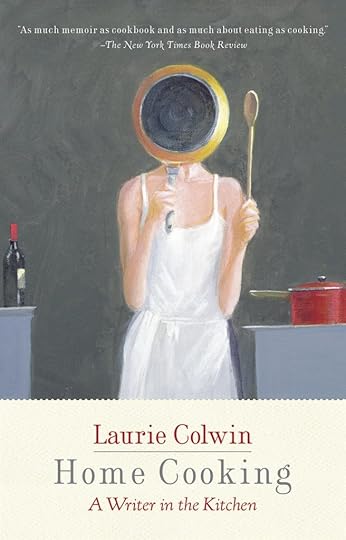
The book I have been most enthusiastic about from the handful of Thanksgiving reads I have done is Home Cooking: A Writer in the Kitchen by Laurie Colwin. It doesn’t sound like a title that just anyone would enjoy, though it is one that I would jump on because I am an obsessed foodie, home cook and baker. A collection of memoir short stories, this book is not Thanksgiving-specific, but is about togetherness and food, two of the main themes of Thanksgiving, and has a very cozy, nostalgic vibe. Add in Colwin’s wry storytelling brimming with wit, humor, and approachableness, and a dozen recipes, and you have my favorite (so far) Thanksgiving book. If you are into vintage NY City or are a writer in the kitchen, this is your book.

I have also read bits and pieces of things that struck my fancy and I can share with you. A short story that makes an interesting Thanksgiving read is “Turkey Remains and How to Inter Them with Numerous Scarce Recipes” by F. Scott Fitzgerald. It’s super old-fashioned as a satire and in its humor (and a couple of no longer PC terms), but my reaction was surprise, then curiosity, then resignation, then bemusement. It’s best to find this one online unless you are a Fitzgerald superfan, then you should try to find a used copy of The Crack-Up. My synopsis of the story was “It is very short. It is, as it says, advice on how to deal with turkey leftovers with a handful of attenuated recipes. The recipes get wilder and more unbelievable as you go on, but I don’t want to spoil it for you. Let’s put it this way: Fitzgerald is no cook; he is a satirist. And this is no polished essay; it is an entry in his personal notes.” An entertaining poem for the holiday is “Thanksgiving in the Anthropocene, 2015” by Craig Santos Perez. A short read that is not my favorite poem ever—in fact, not even that poetic—is a sort of Thanksgiving resistance piece, a crunchy thing that hopes to offend you and make you think. My synopsis: “My main issue with the poem: it concentrates too long on one issue, which is factory farming. Otherwise, it soars through a number of American hypocrisies in moments and comes out the other side with us all with bowed heads around the table, needing forgiveness.” You’ll have to find this one online. I found it at rattle Magazine. And finally, I read a book and then decided that only one chapter was actual Thanksgiving reading, and that is the first chapter of There There by Tommy Orange. I ended up recommending the whole book with some reservations, but for the holiday the first chapter can stand alone as a type of essay and confronts the disturbing reality behind our Thanksgiving observations—the genocide, oppression, and displacement of the native peoples. It sounds heavy because it is, but Orange’s writing is beautiful and he makes important points that are helpful for us to remember, especially at this time of year.
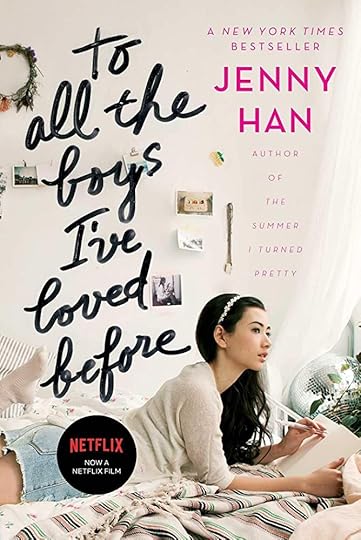

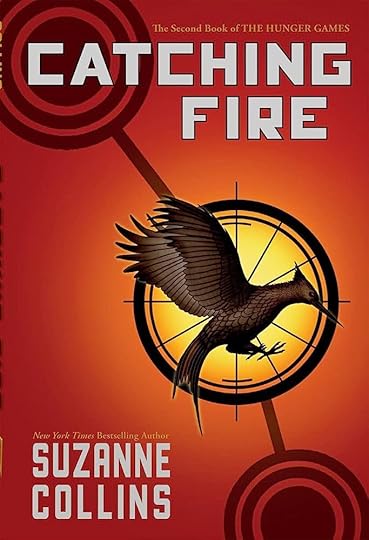

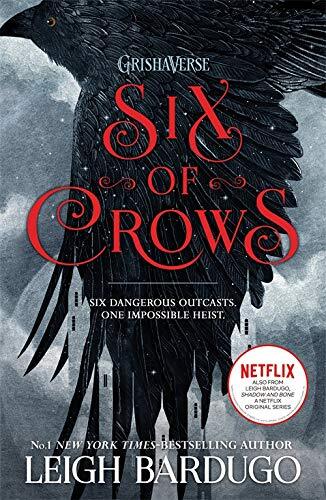

In honor of all the YA I’ll be reading during this season of my writing career (while I’m writing YA), I’ll also recommend some of my favorite YA novels included in Save the Cat Writes a YA Novel, a new book by Jessica Brody that I am currently working my way through. Earlier this year, I read To All the Boys I’ve Loved Before, the first in a trilogy which you don’t necessarily need to continue. In other words, it can stand alone. This romance was written by Jenny Han. While completely YA, I enjoyed this read. I started off a little annoyed and even ended that way, but I was sucked into the story and into the spunky, main character. If you like YA or romance or just a good read, this is a fun one. Six of Crows by Leigh Bardugo is one that you’ll want to read with its sequel, Crooked Kingdom. Bardugo is my favorite new author and I have read five of her books this past year. While I would also recommend the Shadow and Bone trilogy, the Six of Crows duology has to be my favorite YA reading of all time (so far, anyway, and there are other favorites). And it’s completely interesting to adults, as well. It’s dark and complicated, including six POV characters, aged-up teens, and antiheroes galore as well as crime, passion, and multiple, complicated heists. If anything, the story is admirably twisty and keeps you on the edge of your seat, mostly because of your investment in the characters. And lastly—I’ll skip over the Twilight series because I am conflicted about these but man are they addictive—is the Hunger Games trilogy by Suzanne Collins (The Hunger Games, Catching Fire, Mockingjay). I didn’t expect to enjoy these when I read them, but I was more than pleasantly surprised. I loved them. Plan to re-read them. Despite what is usually an awkward POV (first person present), these books slide down as smooth as butter. They overflow with twists and turns, with action and drama, with characters you get super-invested in, and with fascinating world-building (with perhaps too much costuming for some personalities). You may or may not be satisfied with the conclusion of the love triangle (about 50/50 chance, I think), but the books are definitely re-read material, and the movies are some of the best-made, book-to-movie series I’ve seen.

This month is Nanowrimo, and if you don’t know what I am talking about, see HERE. I talk about it on The Starving Artist a lot and I am neck-deep in it. Which means that reading time will be often usurped by writing time (2000 words every single day if you take the holiday off!) this month. For Nano writing, I am bouncing back and forth between two novels I am at the beginning of. One of them involves Appalachian bigfeet, and the other has a character that is inadvertently a mothman. Therefore, I have ordered a handful of books that involve Bigfoot and Mothman. And since both of the books are YA, I am also planning to read plenty of YA for the next several months. Plenty. Many of which will coincide with my reading of Save the Cat Writes a YA Novel, which uses these books as examples, sometimes with spoilers.
 Image from Amazon.com
Image from Amazon.comBut I’m going to start with an ARC that I have on my desk and need to get to, ASAP. The Truth About Horses by was published in August, but I just received a free copy in the mail to review honestly for Christy Cashman. Not a horse person, I have enjoyed at least one horse book in my time, and that was War Horse by Michael Marpugo (a middle grades book). But this new book was irresistible to me despite my lack of horse-enthusiasm, and I took it on based on the glowing reviews that already exist and its being YA and ostensibly deep. I am really looking forward to it and to reintroducing it to the world.
 Image from Amazon.com
Image from Amazon.comAs for Thanksgiving, my read of choice this year is The Book of Delights by Ross Gay. Consisting of a year’s worth of essays on the small joys in Gay’s life, it actually looks like the perfect read for Thanksgiving, for once. People consistently have been enthusiastic about this nonfiction, genre-bending book, though I have also seen people call it “unedited” and “inaccessible.” I’m optimistic, for sure.
As for Bigfoot, this is also an area where there isn’t a ton to read, though I might also hit up the streaming to find some of those old-style documentaries featuring some really into-it Bigfoot enthusiasts who claim to be professors or else have some inexplicable title under their name on the screen. But there are books, some of them novels (which is often what I like to read to get in the writing vibes, instead of straight-up research). I won’t include the nonfiction that I have ordered. The first Bigfoot novel I intend to read is the most popular: Devolution: A Firsthand Account of the Ranier Sasquatch Massacre by Max Brooks (author of World War Z). An account presented as real and scientific from the mouth of an eyewitness, the novel is more of a mockumentary. And it’s violent and scary, two things I try to avoid, honestly. But I am assured it’s a pretty good read. In the end, my bigfeet are going to be gentler, but I am curious to see how they are treated elsewhere in fiction, even if I have to cringe (in fear) my way through. Then I plan to read The Sasquatch Hunter’s Almanac by Sharma Shields, which is fiction even though its title might make you think otherwise. This book looks like it runs much closer to my own approach to Bigfoot in a multi-generational story about a family whose figurehead is obsessed with Bigfoot. I’m hoping it might be magical realism, which is what mine is: YA magical realism. At least I think so, so far.

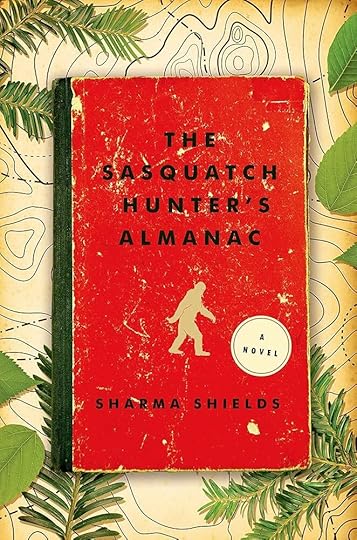

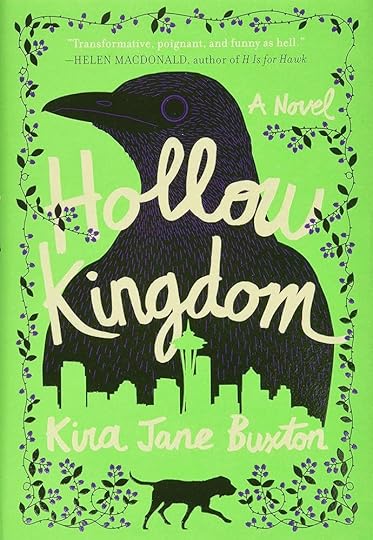

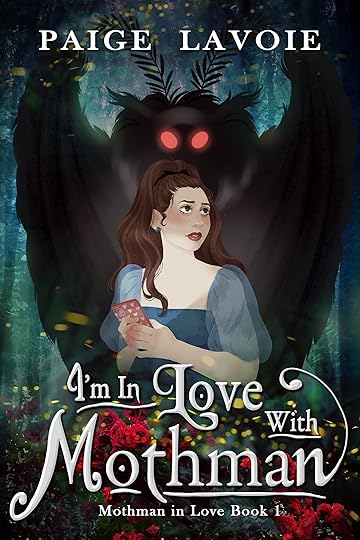
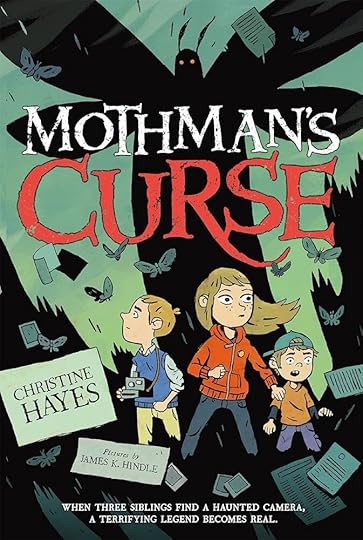


There’s even less regarding Mothman, probably because it’s a much more localized tale with way less enthusiasm surrounding it. (To be clear, my mothman is not based on the Mothman legend, but since they share a name and characteristics, I thought I should be versed in the lore.) I dug deep for these less-known titles. Eerie Appalachia by Mark Muncy and Kari Schultz is a collection of folklore regarding some of the darker legends of the extraordinary fauna of the Appalachian Mountains, which is perfect for what I need. It might include stories of Bigfoot, but at the very least has the quintessential story of Mothman. Hollow Kingdom by Kira Jane Buxton is the first of a series-in-progress. From what I can tell, it’s a bizarre but entertaining, animal-perspective tale of the zombie apocalypse. The second book in the series, Feral Creatures, might have more to do with cryptid creatures, but I’m not totally sure. At any rate, the protagonist is an American crow, and that sounds promising, right? They’re thrillers? Sci-fi? Post-apocalyptic? Maybe all three. I’m In Love with Mothman (Mothman in Love #1) by Paige Lavoie is a strange mashup of a young, modern woman who retreats to the woods and a love story involving—you guessed it—Mothman. People seem to either love it or not really know what to do with it, but its quirkiness has inspired some happy fans. There is more to the series. It might only be available as an ebook, which will disappoint me, but maybe I can manage just this once… Mothman’s Curse by Christine Hayes is a middle grades novel about some spunky kids and their haunted town. It’s scary and revolves around Mothman. It has an adorable cover which makes it look like a graphic novel (it’s not) and has people pleasantly surprised. At least one reader was reminded of Scooby-Doo, which means I am on board. Mothman’s Merry Cryptid Christmas by Andrew Shaffer is a children’s picture book. (We have gone way down the rabbit hole, Alice.) And we have skipped ahead to Christmas reading. This book looks to have not only fun illustrations, but an odd-child, outcast, Rudolph the Red-Nosed Reindeer kind of story. Is Mothman misunderstood and just accident prone? Or are those glowing, red eyes really indicative of a sinister nature? And finally, Dear Mothman by Robin Gow is a middle grades novel in verse about a trans boy who loses his only friend and writes letters to the Mothman, eventually searching for him. (And further down the hole we go.) It doesn’t have a ton of reviews, but the reviewers who are there really love it. So maybe we will, too.
 Image from Amazon.com
Image from Amazon.comI am currently a few chapters into Save the Cat Writes a YA Novel by Jessica Brody. I am stopping after each chapter to apply it to both novels that I am currently writing, which are both YA. I read Save the Cat Writes a Novel last year, but I thought I could use some more specific pointers, and so far I have really enjoyed this very practical, chatty book. In the book, Brody uses something like 70 books as examples (though maybe half of them are specific to the genre sections). I am hoping to read a number of these books as I work my way through so that the spoilers aren’t too bad. Plus, I had planned to read plenty of the top YA, anyhow, and this is just another list to guide me through. I have already read A Good Girl’s Guide to Murder (see below) to this purpose, but here are some of the next reads on my radar:
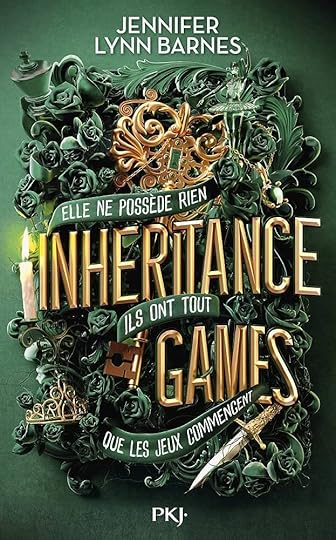 Image from Amazon.com
Image from Amazon.comThe Inheritance Games by Jennifer Lynn Barnes is book one of a series (known usually as The Inheritance Games Collection) that has, so far, four books and is a NY Times #1 bestseller. I am astounded by the reviews, too, but I guess people get really excited about popular things. Hopefully it’s more than that. Filled with mystery and puzzles, the series is about a girl who inherits a fortune—but has no idea who her beneficiary is. She must move into the crazy, sprawling mansion of her inheritance, which comes not only with puzzles and clues and whatnot, but with four grandsons who have been disinherited in her favor and, of course, see her as an interloper. Honestly, it’s a fascinating hook and I’ve been eyeing it for ages.
 Image from Amazon.com
Image from Amazon.comOne of Us Is Lying by Karen M. McManus is book one of a (so-far) trilogy that I’m guessing can be read alone. It’s another mystery, which seems to be dominating YA reading lately (maybe I feel that way though because my college kid likes mysteries and it’s a newer subgenre). After really enjoying A Good Girl’s Guide to Murder (see below), I am hoping I’ll be as pleased with this one. Told from four different perspectives, it’s like The Breakfast Club where one of the highschoolers is murdered and we end up finding out everyone has secrets that make them suspect. I don’t know how this becomes a series, but we’ll have to wait and see.
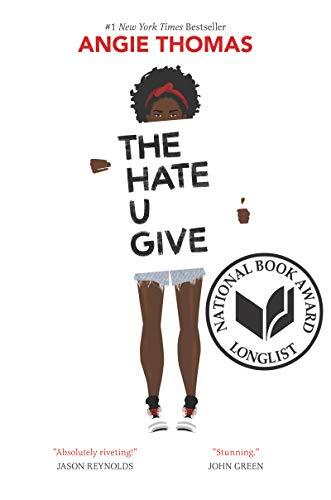 Image from Amazon.com
Image from Amazon.comI have been meaning to read The Hate U Give by Angie Thomas for a long while. Now with a prequel (Concrete Rose), this book has been a must-read for several years, for both young adults and adults who read YA. It has also been made into a movie which I am looking forward to seeing. A very relevant novel for the times (arising from the Black Lives Matter movement), it’s about a girl who witnesses the police-shooting of her unarmed bestie and the fallout after that, which includes both her and her family and friends, but also the national media, the cops, her community, etc.
 Image from Amazon.com
Image from Amazon.comScythe by Neal Shusterman is the first in a lauded trilogy called Arc of the Scythe, which I think is a pretty genius name for a series in an era of dumb series names. In a future where death has been conquered, only Scythes are allowed to end lives, and that’s their job. Two teens are chosen to apprentice as Scythes, but there are a lot of dangers that come with the training, including death itself. These books get some seriously good reviews across the series, and I think the premise is intriguing and original.
 Image from Amazon.com
Image from Amazon.comI actually read Eragon by Christpoher Paolini years ago. It is now a tetralogy called the Inheritance Cycle. The thing is, Eragon was so popular because the writer was just a teen, and people were amazed with that and his way of getting known, which was to travel around basically hawking the self-published books in local markets. (This was way back in 2002.) I was not impressed with the book iteslf, feeling like I was reading a book written by a fifteen-year-old. Because I was. About a boy and his dragon and saving the world, I am hoping that I am more impressed the second time around. I always meant to read the whole series, but it was a long time in coming out. Now I’ll do it.

I devoured several books while at a writing residency and even leading up to it, but the real stand-out came from unexpected acquisitions that I read while in a pinch. The thing is, I have discovered the hard way over the last year that, indeed, small towns often do not have bookstores and, with online ordering, many of them don’t even have a place to really buy books. I had a plan to drive for a used bookstore while in smalltown Tennessee, but I struck out on not one, but two towns. Desperate, it occurred to me that superstores have book sections (which have never yet impressed me), so I drove to the local Walmart and found several of the YA books that were on my to-read list, and also had a flashback to being a little girl up at Meijers looking for the newest re-released L. M. Montgomery novels. In the meantime, when the woman whose residency program I participated in found out I read ARCs, she showed up at my trailer with an armful of ARCs she had acquired from a friend who had already read them. I stacked them in order of interest, not really expecting much, but… you’ll see.
 Image from Simon and Schuster online
Image from Simon and Schuster onlineThe ARC I read while there (and in the vein of my romance-read while on a residency tradition) was Betting on You by Lynn Painter. I haven’t actually reviewed it yet because it’s not out for a few more weeks and technically I’m not supposed to have read it or use quotes from an early copy, though I’m not really sure this is the case since I am an ARC reader and I loved the book (but not about the quotes. That is a no-no). (If I had hated it, I would have just pretended I never read it.) I’ll review it after November. But suffice it to say it was one of my top reads of the month. If you don’t enjoy romance or YA, then forget about it, because it is pretty standard for the genres. However, it’s a real winner for exactly what it is: the characters are lovable, the twists numerous, the setting and side-characters just what you would hope they would be, at least mostly, and the romance sizzles. For someone in their forties, I find I have to kinda age-up characters in YA romances in my head in order to not be awkward (that’s a nice word for it), but often the characters lend themselves to an older interpretation anyhow. It’s an obvious meet-cute where the couple hates each other and has absolutely nothing in common mashed with a pretend-dating scenario and a co-worker bit. But when the writing is engaging, it just is. I would also like to read Painter’s Better Than the Movies and possibly Better Than the Prom.
 Image from Amazon.com
Image from Amazon.comThe book I found at Walmart was A Good Girl’s Guide to Murder by Holly Jackson. I found this book to be engaging and surprising; I couldn’t put it down and read it late into the night while alone, in the dark, in a trailer on a farm in the middle of nowhere, even though I knew full well that was a terrible idea. A YA murder mystery, this book was so fresh and yet recognizable from the perspective of mystery/crime, YA, and even romance (a little). I just enjoyed it, thoroughly. I was guessing (out loud, to my daughter on the phone) about what was going to happen in the like two days that it took me to read it. About a girl who uses her senior project to investigate a hometown murder that assumed the guilt of an older boy who had been nice to her, the poor girl gets caught up in a web of deceit, darkness, and lies that eventually threaten her and her happy, innocent family. Then again, is anyone totally innocent, even if they aren’t involved in a murder? I am told that by book three (which you wouldn’t have to get to; book one can stand alone), the naivety wears off completely. I do plan to head there, which apparently is where Jackson always meant for it to go, though the unconventional turn in plot for book three had people’s eyes popping and hearts stopping.

As far as books I can enthusiastically recommend from October, I’m going to say The Jungle Book(s) by Rudyard Kipling is the only other one, and I wouldn’t even include the whole book. A book of short stories, my favorite stories—the ones with the real charm—are the first three stories, all about Mowgli. These stories would be great to read aloud to your kids or hand to a middle grades kid. Or to read yourself when you need a little calmness, a lighter approach to both story-telling and wisdom.

So, just like with books, there are not a lot—or hardly any—Thanksgiving movies. (Same with Thanksgiving music, but I do have a playlist that I have been working on.) However, there is a Thanksgiving movie coming out this year, at theaters, and it is titled, well, Thanksgiving. There is a big sigh after that, because while I have had my fingers crossed for years that more Thanksgiving-targeted stuff would be produced, this movie is not it. Nope. It is a slasher film. Which is already not a movie I am going to see (although a little bit hypocritical because I was all in for Violent Night, or maybe it isn’t that hypocritical because that was more of a violent action movie mash-up and I won’t be seeing it again even though it was actually pretty good). But it also annoys me that when so few Thanksgiving movies (especially mainstream) exist, this is the one we’re getting? And that they titled it, Thanksgiving. I mean, Violent Night was a way more responsible, non-hood-wink-y title. Like I’m back in the back seat of the family car in the 80s and I’m about to see a movie about animated stuffies and it turns out to be Gremlins and I have to bury my face in my Strawberry Shortcake pillow and fall asleep but that doesn’t stop me from having nightmares for literal decades. Moving on.
Here are some of the movies that I would like to give a shot this year:


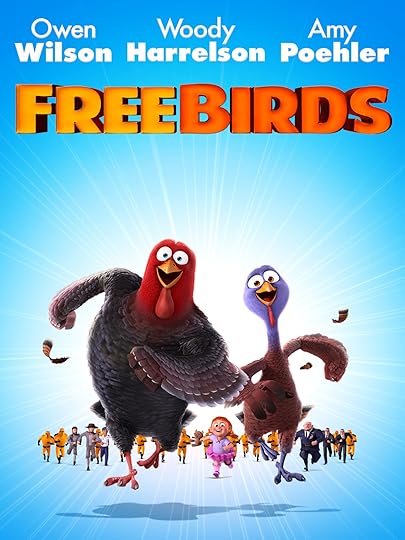
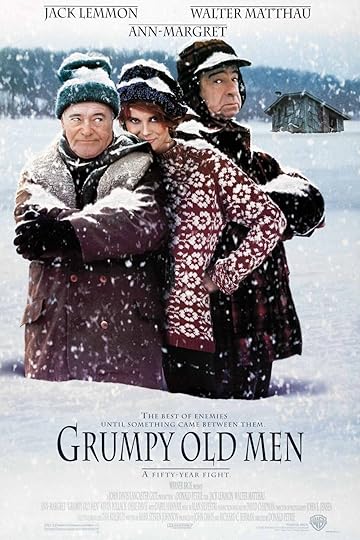
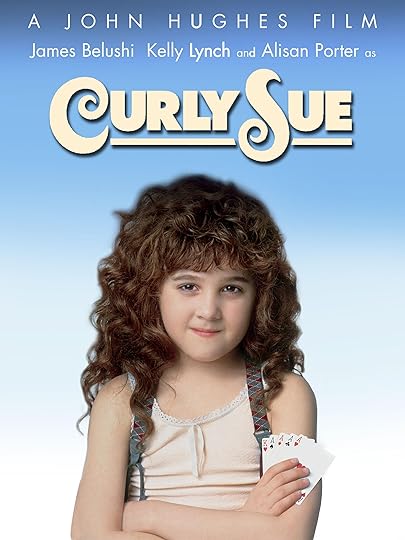


Jim Henson’s Turkey Hallow (2015). I mean, I like Muppets movies, sometimes even love them, so I am happy to watch a puppet movie in hopes of enjoying it, maybe even returning to it. Though I’ve heard very little about it, I have heard that it’s decent.
Pieces of April (2003). What looks to be a family drama with some situational comedy and perhaps even a little romance, this is a lauded film that centers around a Thanksgiving meal and bringing distant family to a shared table, so perfect. I may have seen it years ago, but I don’t recall that I did. This would not be the first time I sat down to a movie I haven’t seen and I realize that I totally have.
Free Birds (2013) is an animated movie with the premise of the pardoned-by-the-president turkey going back in time to prevent turkeys from ever ending up on the Thanksgiving menu. Cute. And well-seen at the time, but with pretty abysmal reviews and many historical errors. (Um. These are time-travelling turkeys, though, so…) I saw it. I hardly remember it. I’d like to see it again and give it a review.
Grumpy Old Men (1993) is one of those movies that is tied to my growing up. I am sure that we watched this one as a family more than once, and we referenced in in the years to come. Two grumpy, old men (surprise!) who have been grumpy at each other for a lifetime compete for a new neighbor’s affections. There is a Thanksgiving dinner involved in the plot, and I’m guessing plenty of holiday references, but I really don’t remember. It’s a classic.
Curly Sue (1991). Another movie that we watched multiple times when I was a tween (before that was a term) and then referenced around the dinner table (like when Curly Sue licks all of her fingers after eating). About a homeless man and orphaned girl who tag-team to scam people out of survival funds, everybody (read: reviewers) seems to hate this movie, except actual people, who love it. I am wondering how offensive it might be regarding the homeless/unhoused, now that it’s no longer the 90s. Some have called it violent and profane. I can’t say that was our family’s read on it, at the time, and we were a fairly straight-laced family. My sister and I loved Curly Sue herself. We’ll see.
She’s Gotta Have It (1986) is Spike Lee’s first feature film and it’s controversial for its portrayal of a woman who has three lovers, etc., and is trying to balance them. Thanksgiving ends up being the day they all have dinner together, or something like that. The critics love it. I have never seen it, for the obvious reason that I was in kindergarten when it was released.
The New World (2005). I’m pretty sure I saw this legend-based portrayal of the John Smith-Pocahontas story when it came out. Did I like it? …I …think …so? It’s unapologetically unfactual, based more on the legend though these were real people and events (basically), but I think it probably gets at some things regarding that first Thanksgiving. It’s a long movie at 2 ½ hours (3-hour movies were so in), and reviews are absolutely everywhere across the spectrum. It bombed at the box office, but was up for several awards and later deemed one of the best movies of the twenty-naughts.

I really only started digging for Thanksgiving stuff last year (or the year before?), so my list of recommendations is quite short.
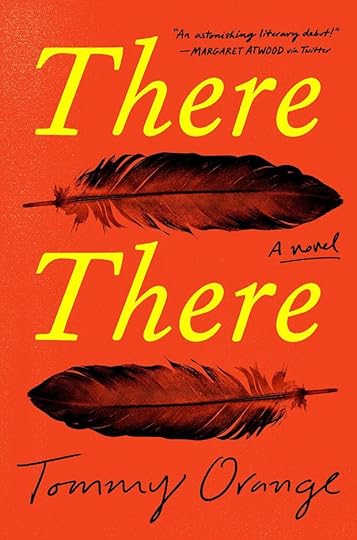

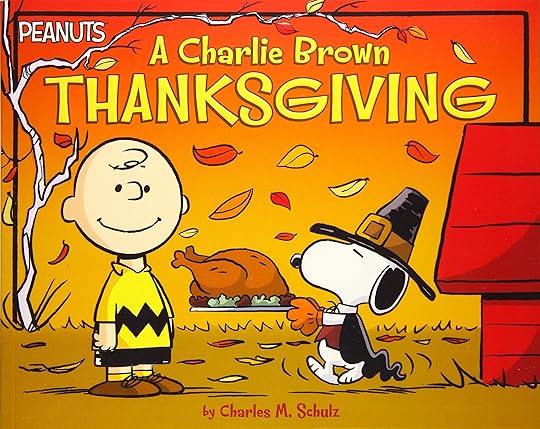


As far as reading, I haven’t read enough to recommend more than the few at the beginning of this blog post. So, Home Cooking: A Writer in the Kitchen (Laurie Colwin), “Turkey Remains and How to Inter Them with Numerous Scarce Recipes” (with reservations; F. Scott Fitzgerald), “Thanksgiving in the Anthropocene, 2015” (Craig Santoz Perez), and the first chapter of There There (Tommy Orange). For movies, it’s Planes, Trains, and Automobiles (1987), A Charlie Brown Thanksgiving (1973), and—this is important—for the day after Thanksgiving, Miracle on 34th Street (1947). (I also recommend watching The Nightmare Before Christmas (1993) on the day after Halloween, but that chicken has flown the coop this year, already. My hubby and I went to an anniversary, 3-D screening and I tolerated the 3-D to have a good time. 3-D is a novelty which distracts me. Tim Burton rules.




